Forums
- Forums
- Duggy's Reference Hangar
- RAF Library
- Fairey Barracuda
Fairey Barracuda
Post a reply
- Go to Previous topic
- Go to Next topic
- Go to Welcome
- Go to Introduce Yourself
- Go to General Discussion
- Go to Screenshots, Images and Videos
- Go to Off topic
- Go to Works in Progress
- Go to Skinning Tips / Tutorials
- Go to Skin Requests
- Go to IJAAF Library
- Go to Luftwaffe Library
- Go to RAF Library
- Go to USAAF / USN Library
- Go to Misc Library
- Go to The Ops Room
- Go to Made in Germany
- Go to Campaigns and Missions
- Go to Works in Progress
- Go to Juri's Air-Raid Shelter
- Go to Campaigns and Missions
- Go to Works in Progress
- Go to Skinpacks
- Go to External Projects Discussion
- Go to Books & Resources
-
4 years agoSun Nov 02 2025, 11:35amDuggy
 Main AdminThe Fairey Barracuda was a British carrier-borne torpedo and dive bomber designed by Fairey Aviation. It was the first aircraft of this type operated by the Royal Navy's Fleet Air Arm (FAA) to be fabricated entirely from metal.
Main AdminThe Fairey Barracuda was a British carrier-borne torpedo and dive bomber designed by Fairey Aviation. It was the first aircraft of this type operated by the Royal Navy's Fleet Air Arm (FAA) to be fabricated entirely from metal.
The Barracuda was developed as a replacement for the Fairey Albacore biplanes. Development was protracted due to the original powerplant intended for the type, the Rolls-Royce Exe, being cancelled; it was replaced by the less powerful Rolls-Royce Merlin engine. On 7 December 1940 the first Fairey prototype conducted its maiden flight; early testing revealed it to be somewhat underpowered. However, the definitive Barracuda Mk II had a more powerful model of the Merlin engine, while later versions were powered by the larger and even more powerful Rolls-Royce Griffon engine. The type was ordered in bulk to equip the FAA; in addition to Fairey's own production line, Barracudas were also built by Blackburn Aircraft, Boulton Paul, and Westland Aircraft.
The type participated in numerous carrier operations during the conflict, being deployed in the Atlantic Ocean, Mediterranean Sea, and the Pacific Ocean against the Germans, Italians, and Japanese respectively during the latter half of the war. One of the Barracuda's most noteworthy engagements was a large-scale attack upon the German battleship Tirpitz on 3 April 1944.
Design and development
In 1937 the British Air Ministry issued Specification S.24/37, which sought a monoplane torpedo bomber to satisfy Operational Requirement OR.35. The envisioned aircraft was a three-seater that would possess both a high payload capacity and a high maximum speed.Six submissions were received by the Air Ministry, from which the designs of Fairey and Supermarine (Type 322) were selected; a pair of prototypes of each design were ordered.On 7 December 1940, the first Fairey prototype conducted its maiden flight.The Supermarine Type 322 did not fly until 1943: as the Barracuda was already in production by then its development did not progress further.
The Barracuda was a shoulder-wing cantilever monoplane It had a retractable undercarriage and non-retracting tailwheel. The hydraulically-actuated main landing gear struts were of an "L" shape which retracted into a recess in the side of the fuselage and the wing, with the wheels within the wing. A flush arrestor hook was fitted directly ahead of the tail wheel. It was operated by a crew of three, who were seated in a tandem arrangement under a continuous-glazed canopy. The pilot had a sliding canopy while the other two crew members' canopy was hinged. The two rear-crew had alternate locations in the fuselage, the navigator's position having bay windows below the wings for downward visibility. The wings were furnished with large Fairey-Youngman flaps which doubled as dive brakes. Originally fitted with a conventional tail, flight tests suggested that stability would be improved by mounting the stabiliser higher, similar to a T-tail, an arrangement that was implemented on the second prototype. For carrier stowage the wings folded back horizontally at the roots; the small vertical protrusions on the upper wingtips held hooks that attached to the tailplane.
The Barracuda had originally been intended to be powered by the Rolls-Royce Exe X block, sleeve valve engine. However, production of this powerplant was problematic and eventually abandoned, which in turn delayed the prototype's trials.Instead, it was decided to adopt the lower-powered 12-cylinder V-type Rolls-Royce Merlin Mark 30 engine (1,260 hp/940 kW) to drive a three-bladed de Havilland propeller; the prototypes eventually flew in this configuration.Experiences gained from the prototype's flight testing, as well as operations with the first production aircraft, designated Barracuda Mk I, revealed the aircraft to be underpowered; this has been attributed to have largely resulted from the weight of extra equipment that had been added since the initial design phase. Only 23 Barracuda Mk Is were constructed, including five by Westland Aircraft, these aircraft were only used for trials and conversion training.
Pilots came to appreciate the powerful flaps/airbrakes fitted to the aircraft; reportedly, performing a carrier landing while flying the Barracuda was relatively straightforward due to a combination of these flaps and good visibility from the cockpit. Retracting the airbrakes at high speeds whilst simultaneously applying rudder would cause a sudden change in trim, which could throw the aircraft into an inverted dive. Incidents of this occurrence proved fatal on at least five occasions during practice torpedo runs; once the problem was identified, appropriate pilot instructions were issued prior to the aircraft entering carrier service.
Further development
The definitive version of the aircraft was the Barracuda Mk II; this had the more powerful 1,640 hp (1,220 kW) Merlin 32 driving a four-bladed propeller. A total of 1,688 Mk IIs were manufactured by several companies, including Fairey (at Stockport and Ringway) (675), Blackburn Aircraft (700), Boulton Paul (300), and Westland (13).The Barracuda Mk II carried the metric wavelength ASV II (Air to Surface Vessel) radar, with the Yagi-Uda antennae carried above the wings.
The Barracuda Mk III was a Mk II optimised for anti-submarine work; changes included the replacement of the metric wavelength ASV set by a centimetric ASV III variant, the scanner for which was housed in a blister under the rear fuselage. 852 Barracuda Mk IIIs were eventually produced; 406 aircraft by Fairey and 392 by Boulton Paul.
The Barracuda Mk IV never left the drawing board;the next and final variant was the Barracuda Mk V, in which the Merlin was replaced with the larger Rolls-Royce Griffon engine. The increased power and torque of the Griffon necessitated various changes, which included the enlargement of the vertical stabiliser and increased wing span with tips being clipped. The first Barracuda Mk V, which was converted from a Mk II, did not fly until 16 November 1944; Fairey had only built 37 aircraft before the war in Europe was over.
Early Merlin 30-powered Barracuda Mk 1s were deemed to be underpowered and suffered from a poor rate of climb; however, once airborne, the type proved relatively easy to fly. During October 1941, trials of the Barracuda Mk 1 were conducted at RAF Boscombe Down, which found that the aircraft possessed an overall weight of 12,820 lb (5,830 kg) when equipped with 1,566 lb (712 kg) torpedo; at this weight, the Mk 1 showed a maximum speed of 251 mph (405 km/h) at 10,900 ft (3,300 m), a climb to 15,000 ft (4,600 m) took 19.5 minutes, with a maximum climb rate of 925 ft/min (4.7 m/s) at 8,400 ft (2,560 m), and a 19,100 ft (5,800 m) service ceiling.
The later Barracuda Mk II had the more powerful Merlin 32, providing a 400 hp (300 kW) increase in power. During late 1942 testing of the Mk II was performed at RAF Boscombe Down; when flown at 14,250 lb (6,477 kg) showed a climb to 10,000 ft (3,000 m) in 13.6 minutes, with a maximum climb rate of 840 ft/min (4.3 m/s) at 5,200 ft and an effective ceiling of 15,000 ft (4,600 m). During June 1943, further testing occurred at Boscombe Down, which demonstrated a maximum range while carrying either a 1,630 lb (750 kg) torpedo or a single 2,000 lb bomb (909 kg), of 840 statute miles (1,360 km), and a practical range of 650 statute miles (1,050 km), while carrying 6 x 250 lb (114 kg) bombs reduced the range to 780 miles (1,260 km) and 625 miles (1,010 km), respectively.
During the earlier part of its service life, the Barracuda suffered a fairly high rate of unexplained fatal crashes, often involving experienced pilots. During 1945 the cause was traced to small leaks developing in the hydraulic system; the most common point for such a leak to happen was at the point of entry to the pilot's pressure gauge and was situated such that the resulting spray was directed straight into the pilot's face. The chosen hydraulic fluid contained ether and, as the aircraft were only rarely equipped with oxygen masks and few aircrew wore them below 10,000 ft/3,000 m anyway, the pilot quickly became unconscious during such a leak, inevitably leading to a crash. At the end of May 1945, an Admiralty order was issued that required all examples of the type to be fitted with oxygen as soon as possible, and for pilots to use the system at all times.
Operational history
The first Barracudas entered operational service on 10 January 1943 with 827 Squadron of the Fleet Air Arm (FAA), who were deployed in the North Atlantic. Eventually a total of 24 front-line FAA squadrons were equipped with Barracudas. While intended to principally function as a torpedo bomber, by the time the Barracuda arrived in quantity relatively little Axis-aligned shipping remained, so it was instead largely used as a dive-bomber.From 1944 onwards, the Barracuda Mk II was accompanied in service by radar-equipped, but otherwise similar, Barracuda Mk IIIs; these were typically used to conduct anti-submarine operations.
The Royal Air Force (RAF) also operated the Barracuda Mk II. During 1943 the first of the RAF's aircraft were assigned to No. 567 Sqn., based at RAF Detling. During 1944 similar models went to various squadrons, including 667 Sqn. at RAF Gosport, 679 Sqn. at RAF Ipswich and 691 Sqn. at RAF Roborough. Between March and July 1945 all of the RAF's Barracudas were withdrawn from service.
During July 1943, the Barracuda first saw action with 810 Squadron aboard HMS Illustrious off the coast of Norway; shortly thereafter, the squadron was deployed to the Mediterranean Sea to support the landings at Salerno, a critical element of the Allied invasion of Italy. During the following year, the Barracuda entered service in the Pacific Theatre.
As the only British naval aircraft in service stressed for dive bombing following the retirement of the Blackburn Skua the Barracuda participated in Operation Tungsten, an attack on the German battleship Tirpitz while it was moored in Kåfjord, Alta, Norway. On 3 April 1944 a total of 42 aircraft dispatched from British carriers HMS Victorious and Furious scored 14 direct hits on Tirpitz using a combination of 1,600 lb (730 kg) and 500 lb (230 kg) bombs for the loss of one bomber.This attack damaged Tirpitz, killing 122 of her crew and injuring 316, as well as disabling the ship for over two months. However, the slow speed of the Barracudas contributed to the failure of the subsequent Operation Mascot and Operation Goodwood attacks on Tirpitz during July and August of that year.
On 21 April 1944 Barracudas of No 827 Squadron aboard Illustrious began operations against Japanese forces. The type participated in air raids on Sabang in Sumatra, known as Operation Cockpit.In the Pacific theatre, the Barracuda's performance was considerably reduced by the prevailing high temperatures;reportedly, its combat radius in the Pacific was reduced by as much as 30%. This diminished performance was a factor in the decision to re-equip the torpedo bomber squadrons aboard the fleet carriers of the British Pacific Fleet with American-built Grumman Avengers.
In the Pacific, a major problem hindering the Barracuda was the need to fly over Indonesian mountain ranges to strike at targets located on the eastern side of Java, which necessitated a high-altitude performance that the Barracuda's low-altitude-rated Merlin 32 engine with its single-stage supercharger could not effectively provide.Additionally, the carriage of maximum underwing bomb loads resulted in additional drag, which further reduced performance.However, the Light Fleet Carriers of the 11th ACS (which joined the BPF in June 1945) were all equipped with a single Barracuda and single Corsair squadron; by Victory over Japan Day, the BPF had a total of five Avenger and four Barracuda squadrons embarked on its carriers.
A number of Barracudas participated in trial flights, during which several innovations were tested, including RATOG rockets for boosting takeoff performance, and a braking propeller, which slowed the aircraft by reversing the blade pitch.
Following the end of the conflict, the Barracuda was relegated to secondary roles, for the most part being used as a trainer aircraft. The type continued to be operated by FAA squadrons up until the mid-1950s, by which time the type were withdrawn entirely in favour of the Avengers.
Variants
Barracuda
Two prototypes (serial numbers P1767 and P1770) based on the Fairey Type 100 design.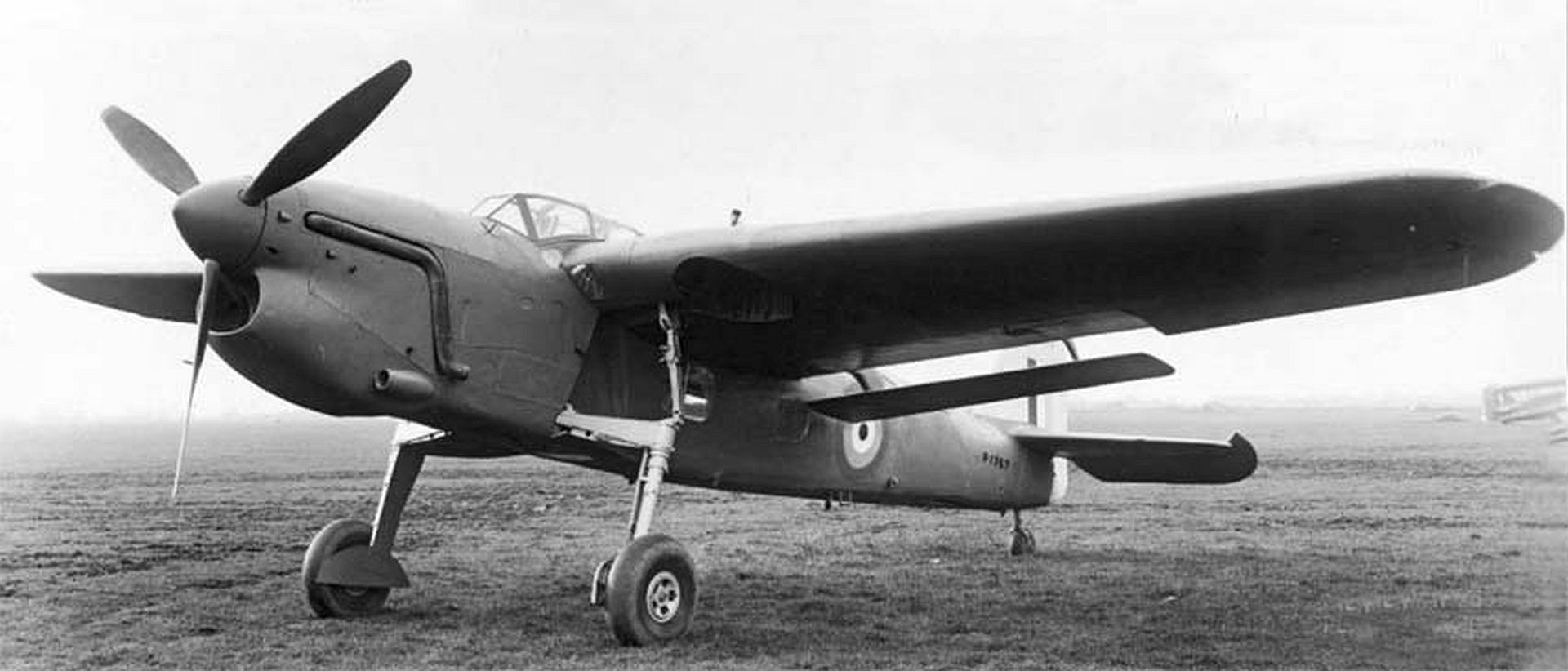
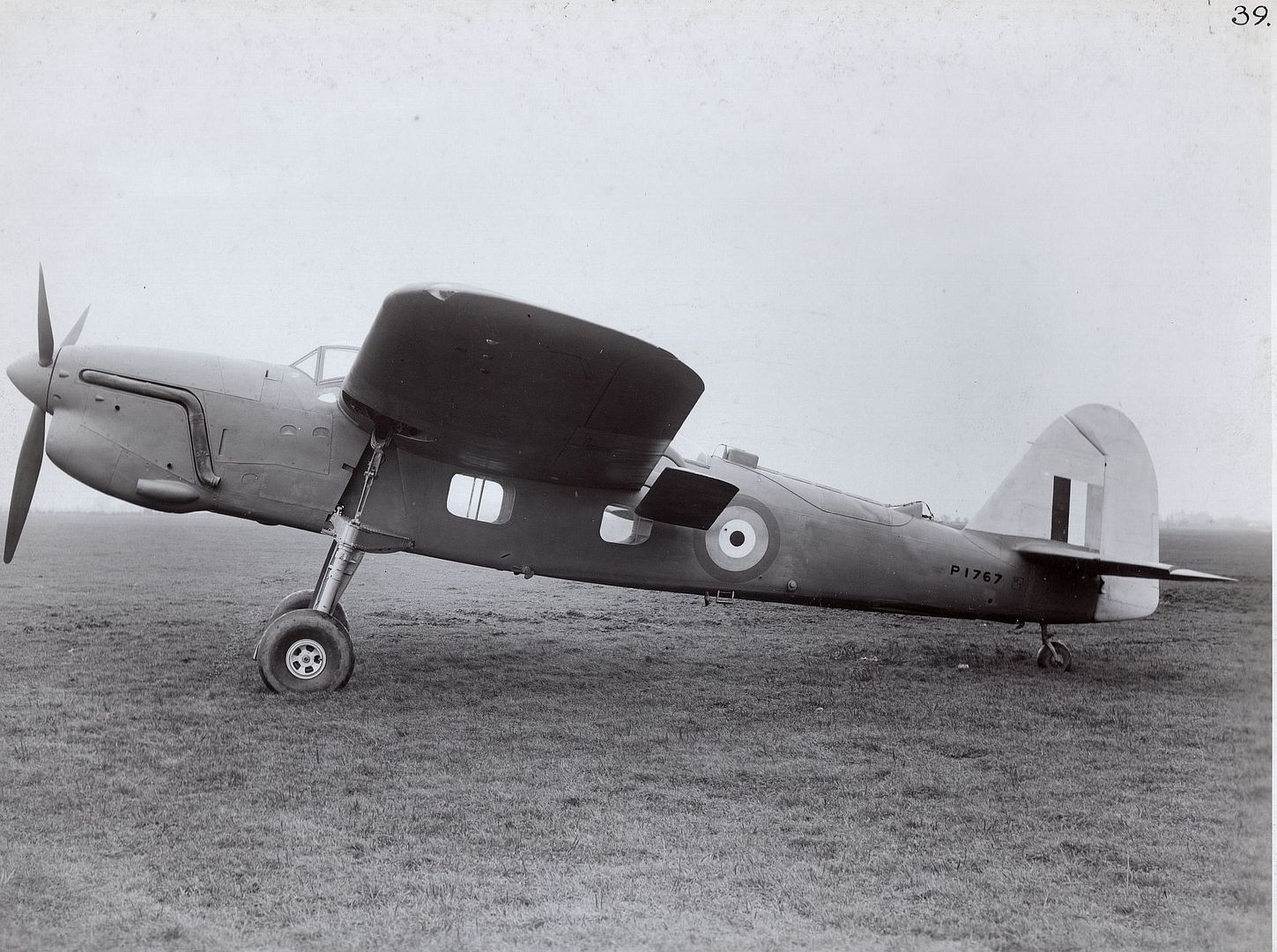

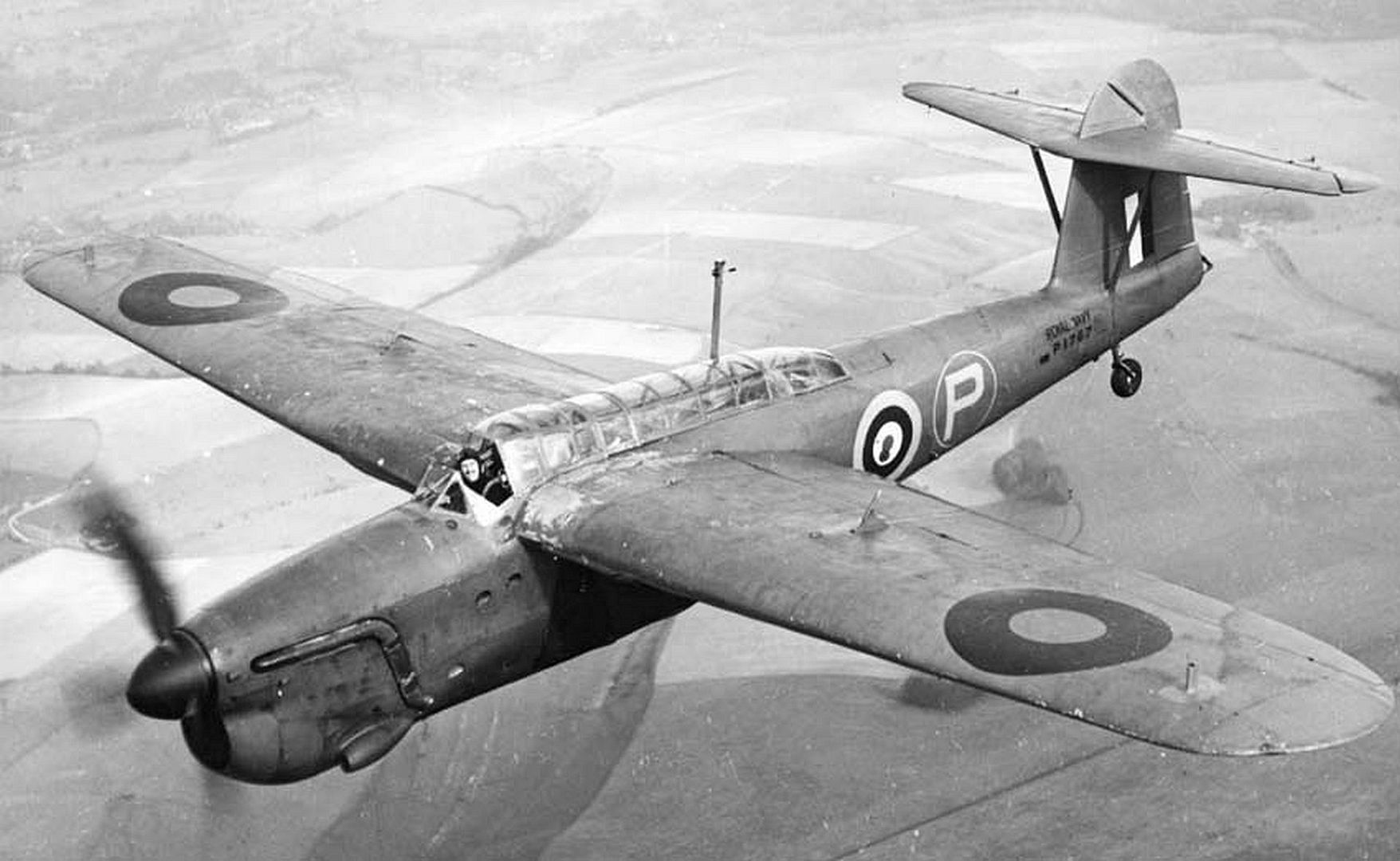
Mk I
First production version, Rolls-Royce Merlin 30 engine with 1,260 hp (940 kW), 30 built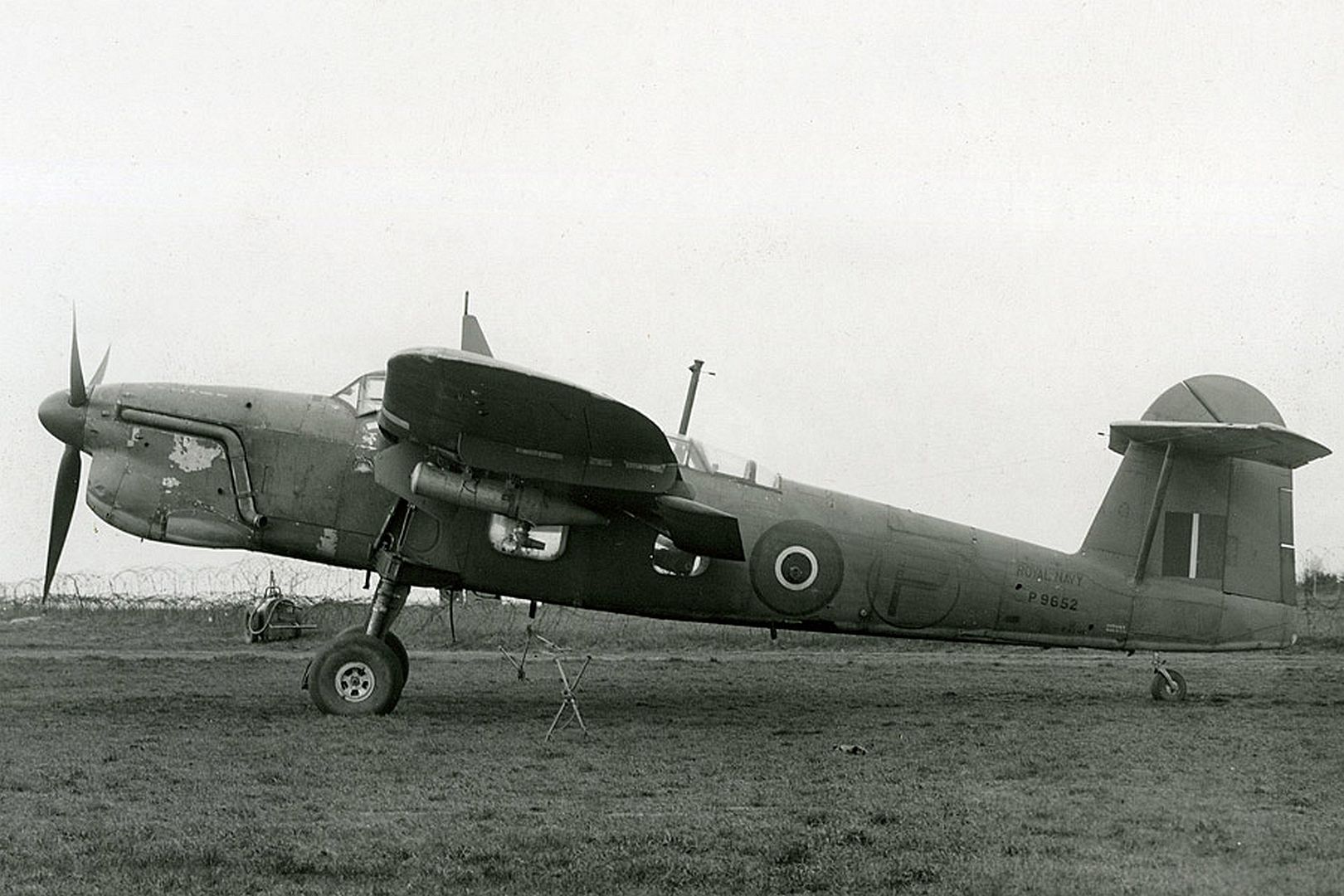
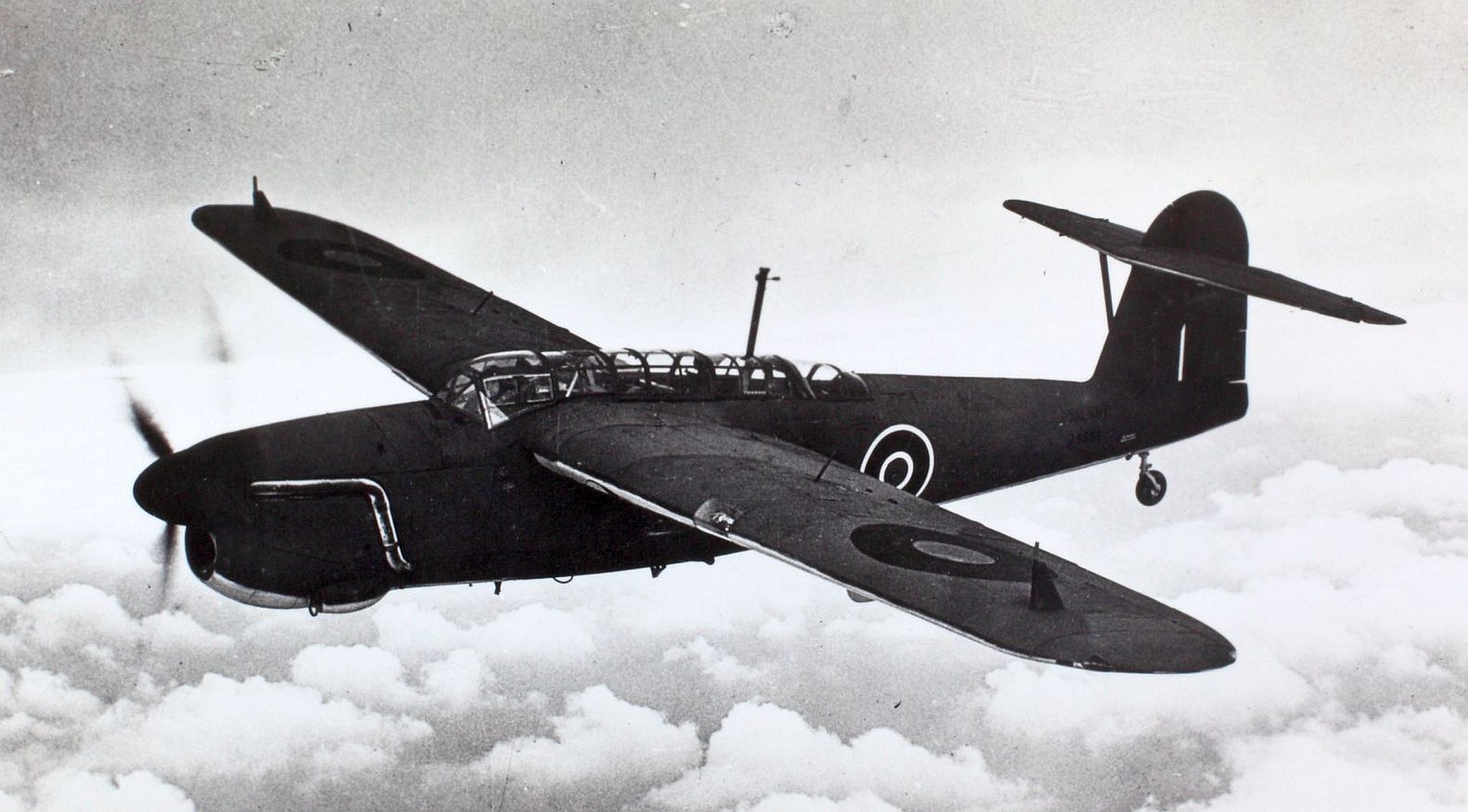
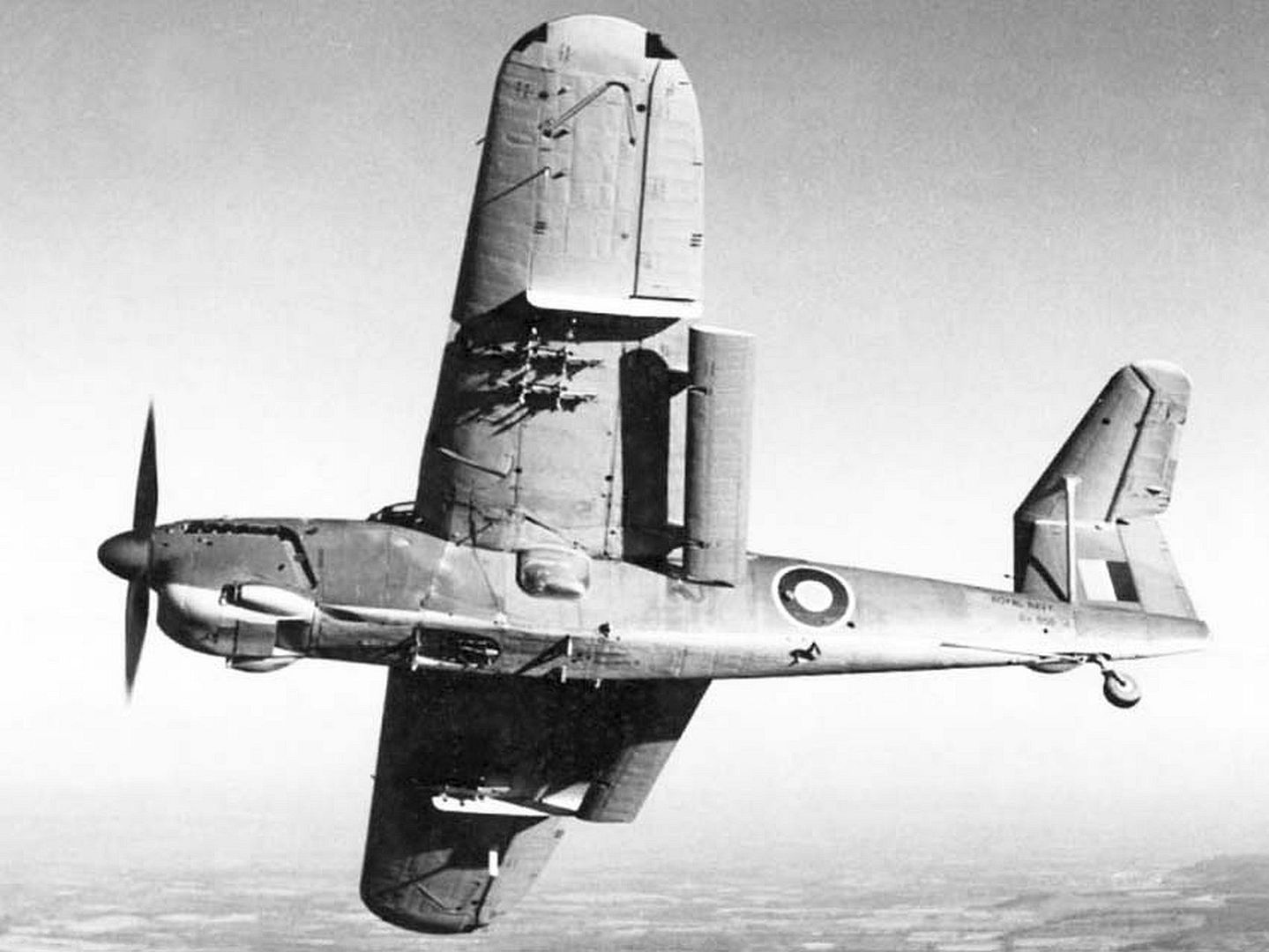
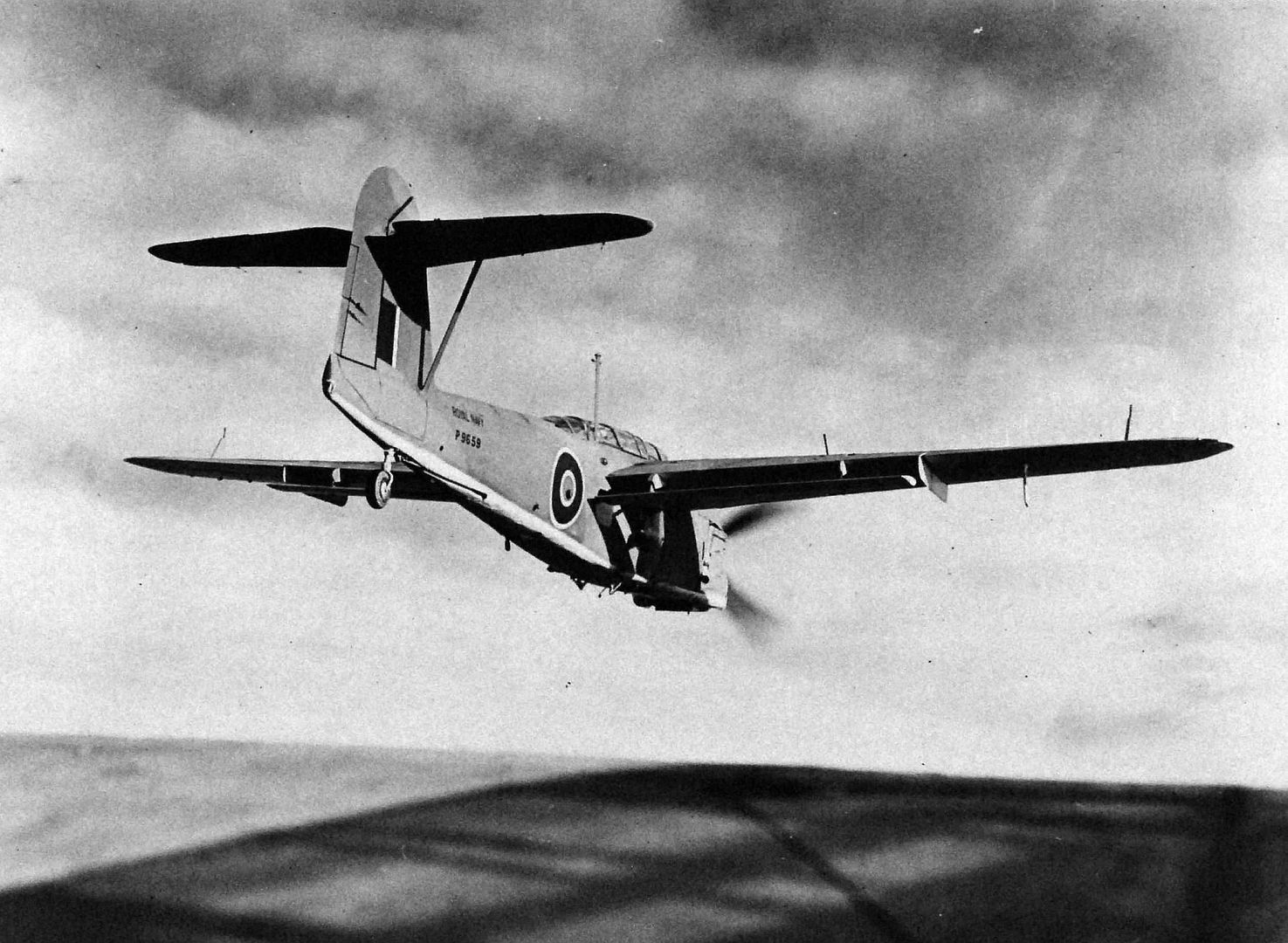
Mk II
Upgraded Merlin 32 engine with 1,640 hp (1,225 kW), four-bladed propeller, ASV II radar, 1,688 built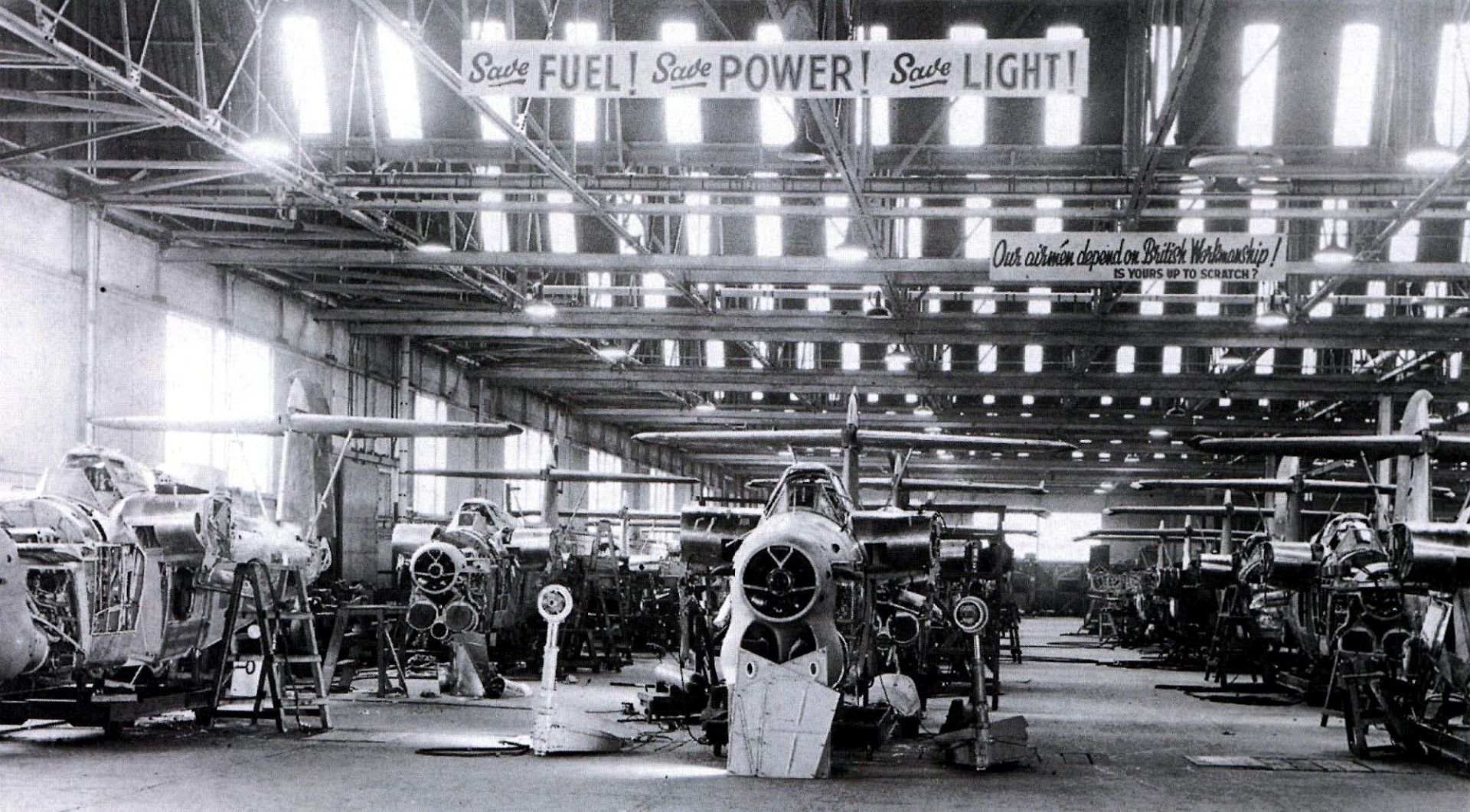
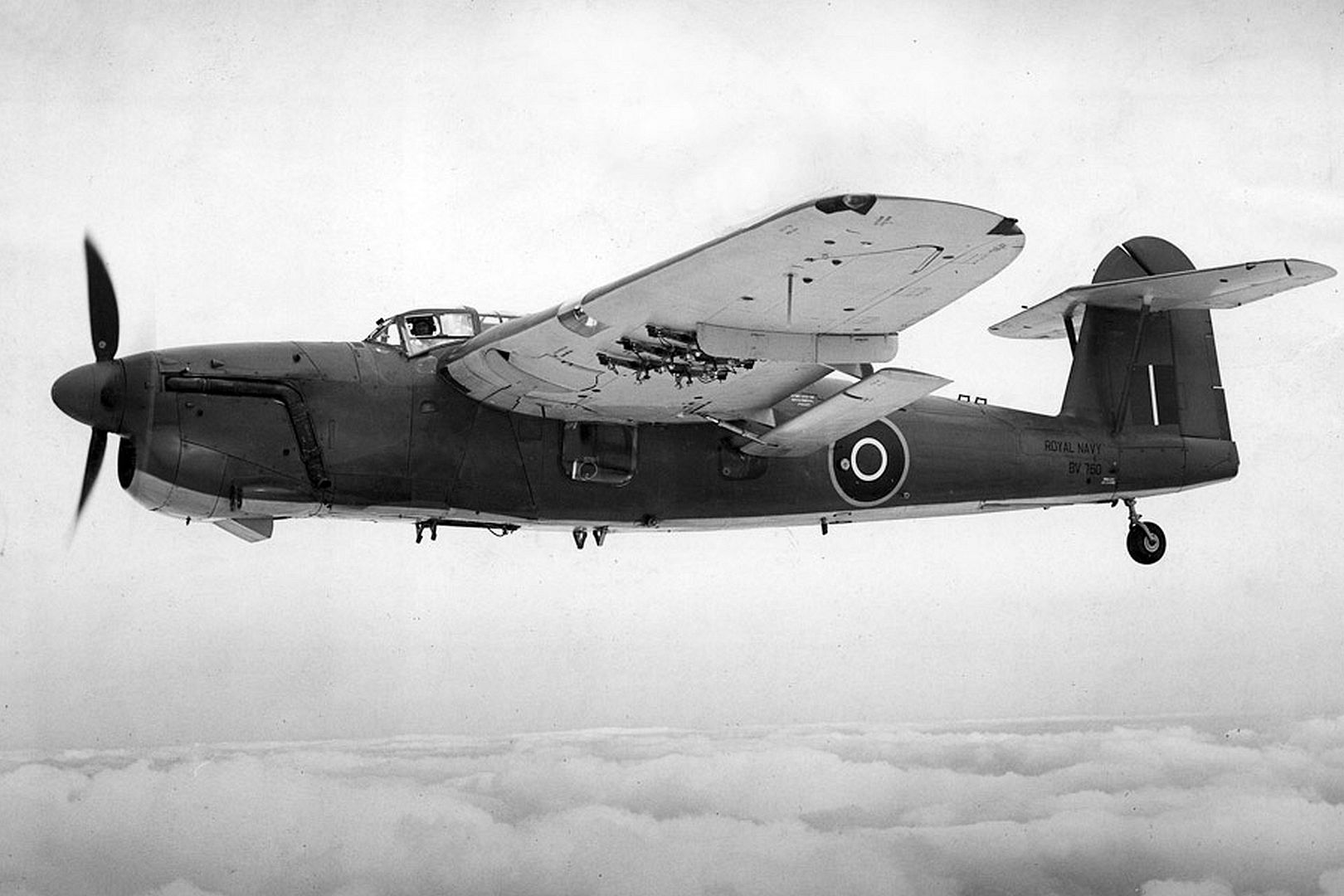

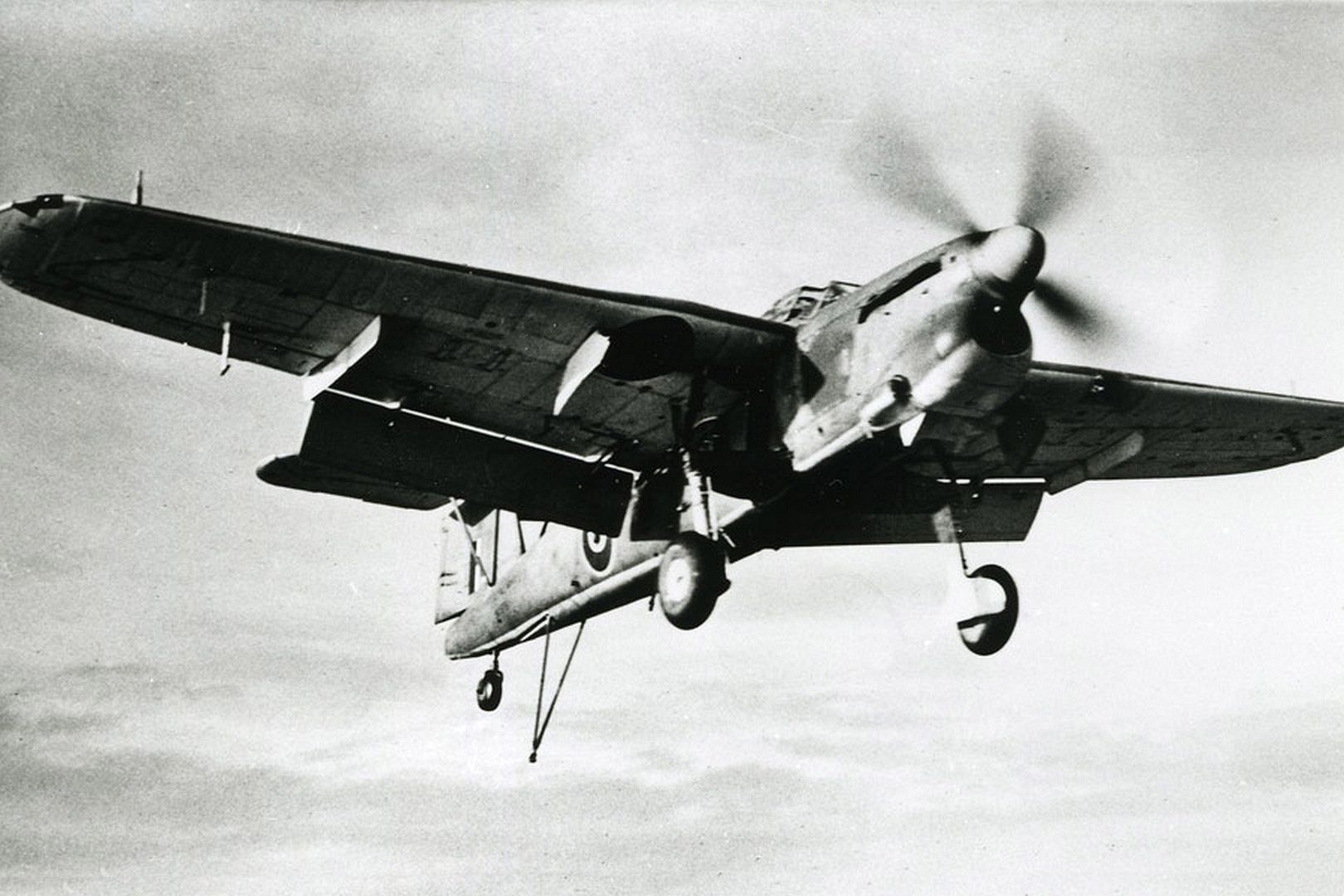
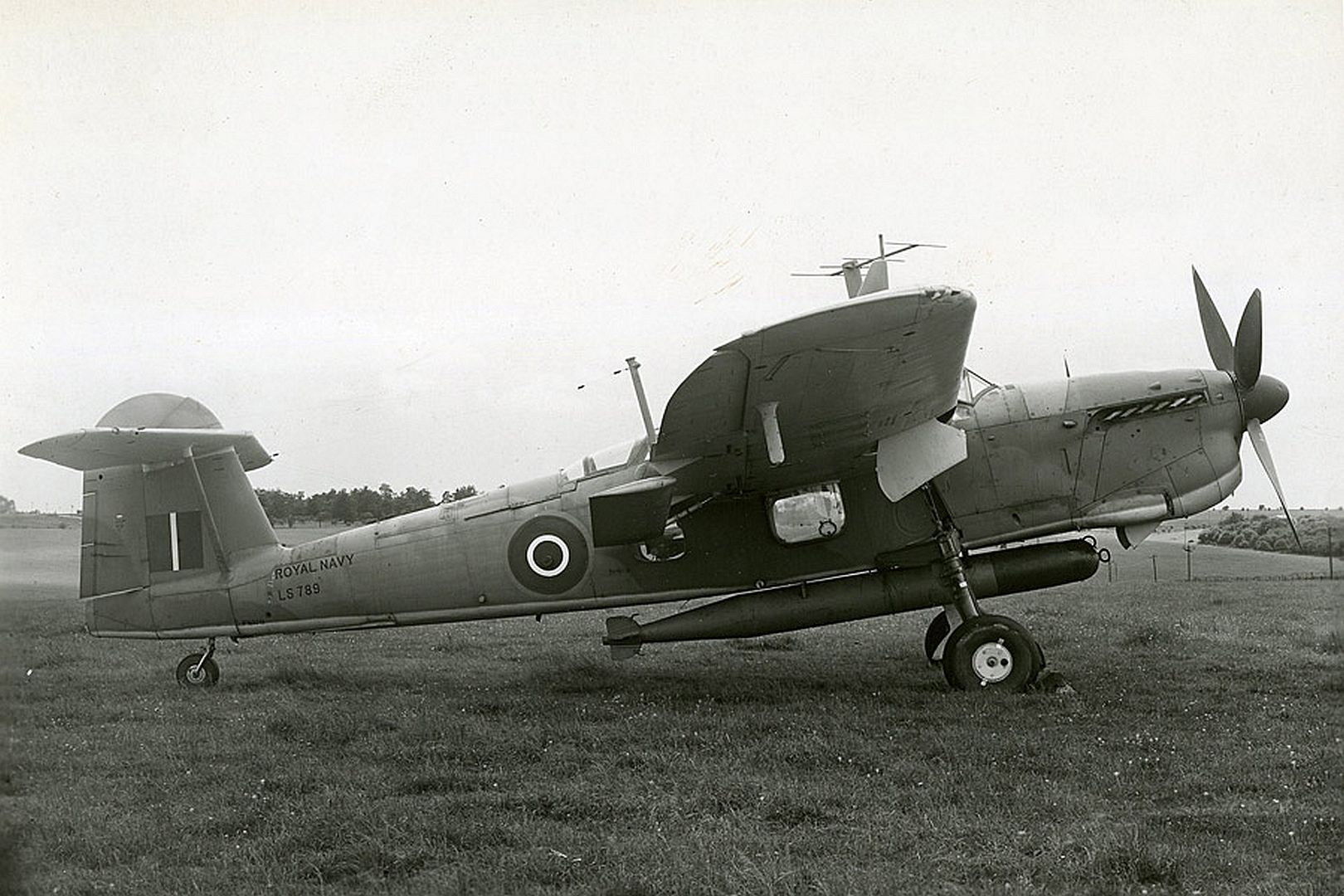
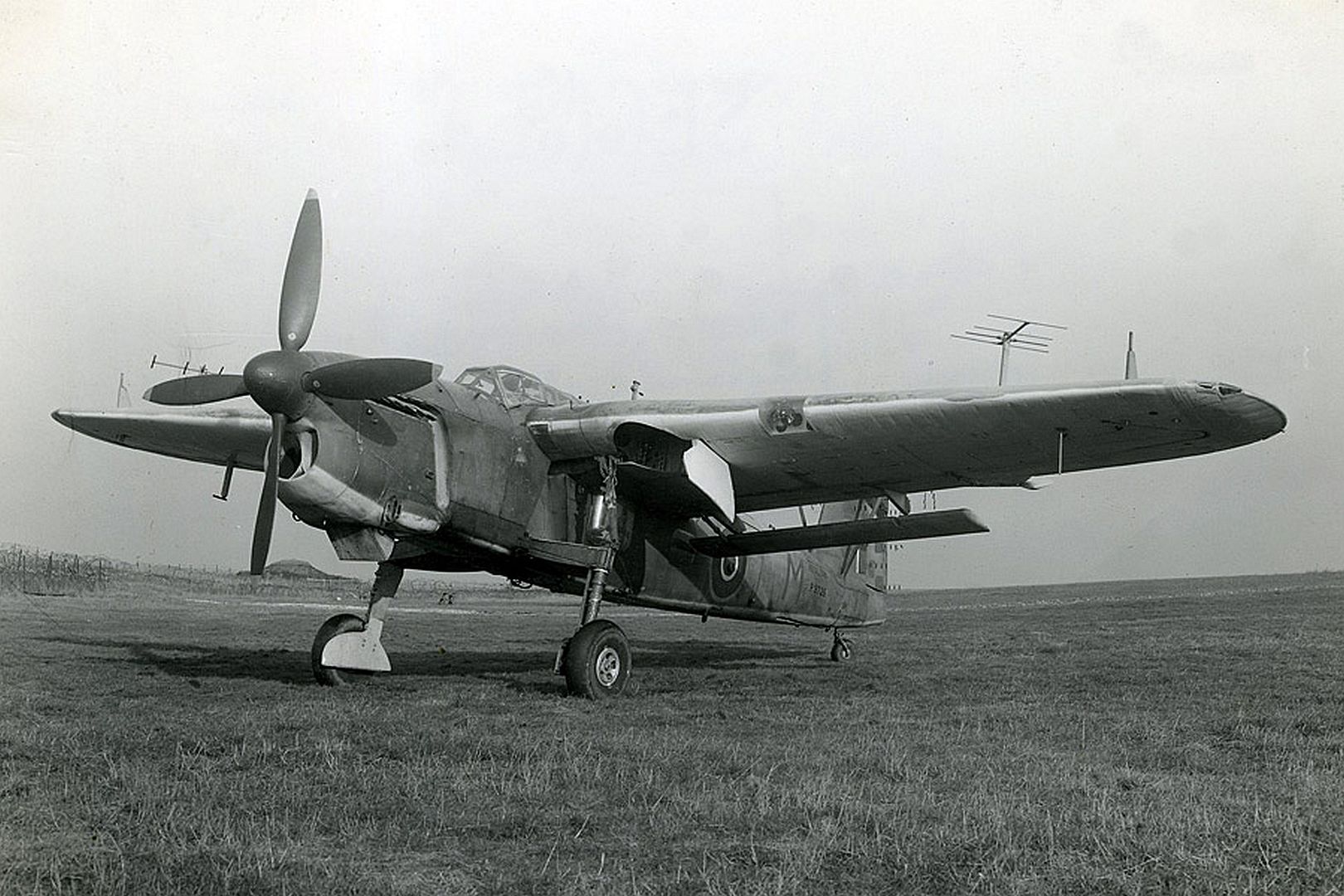
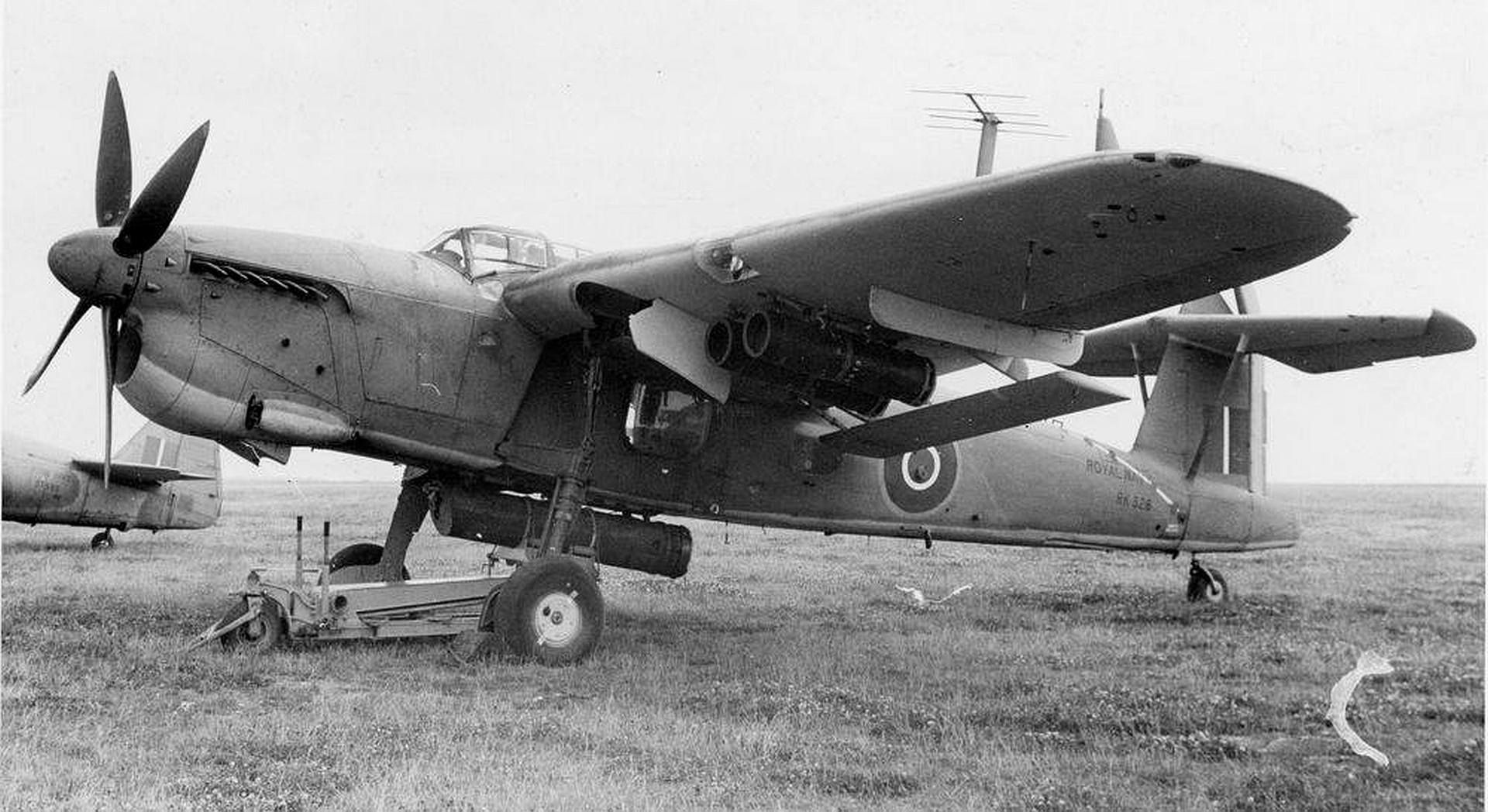


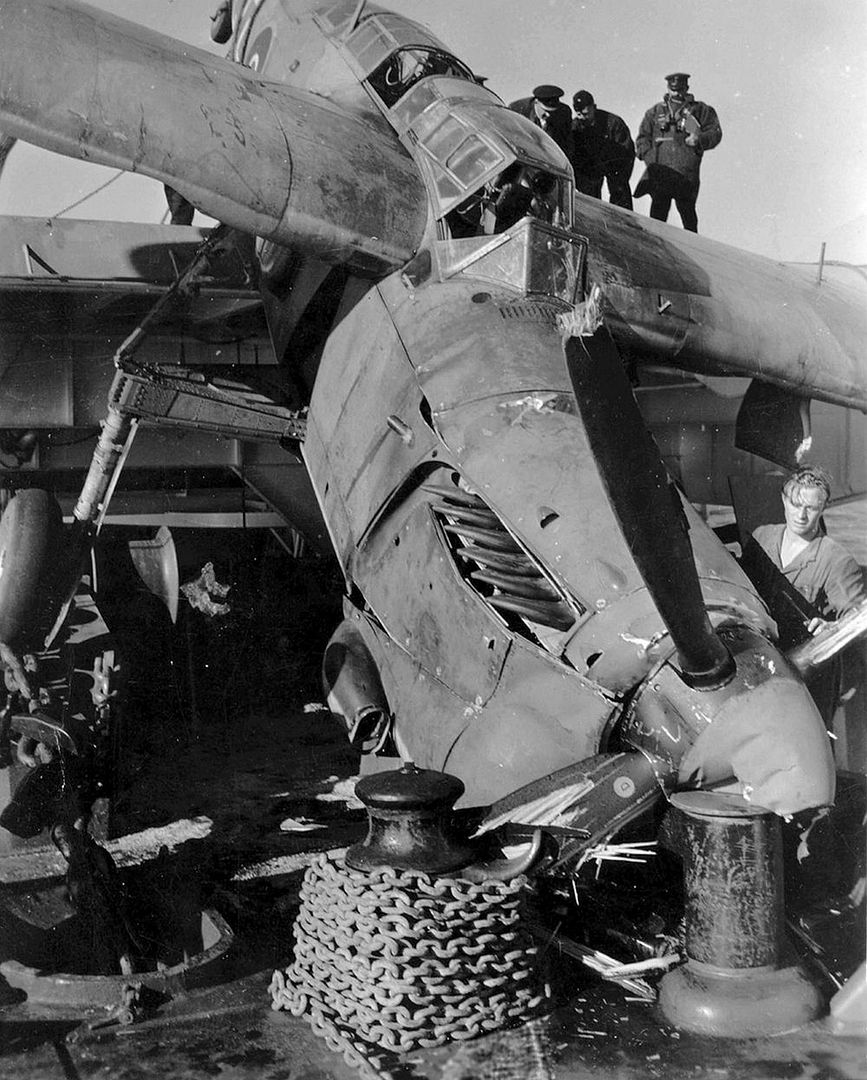
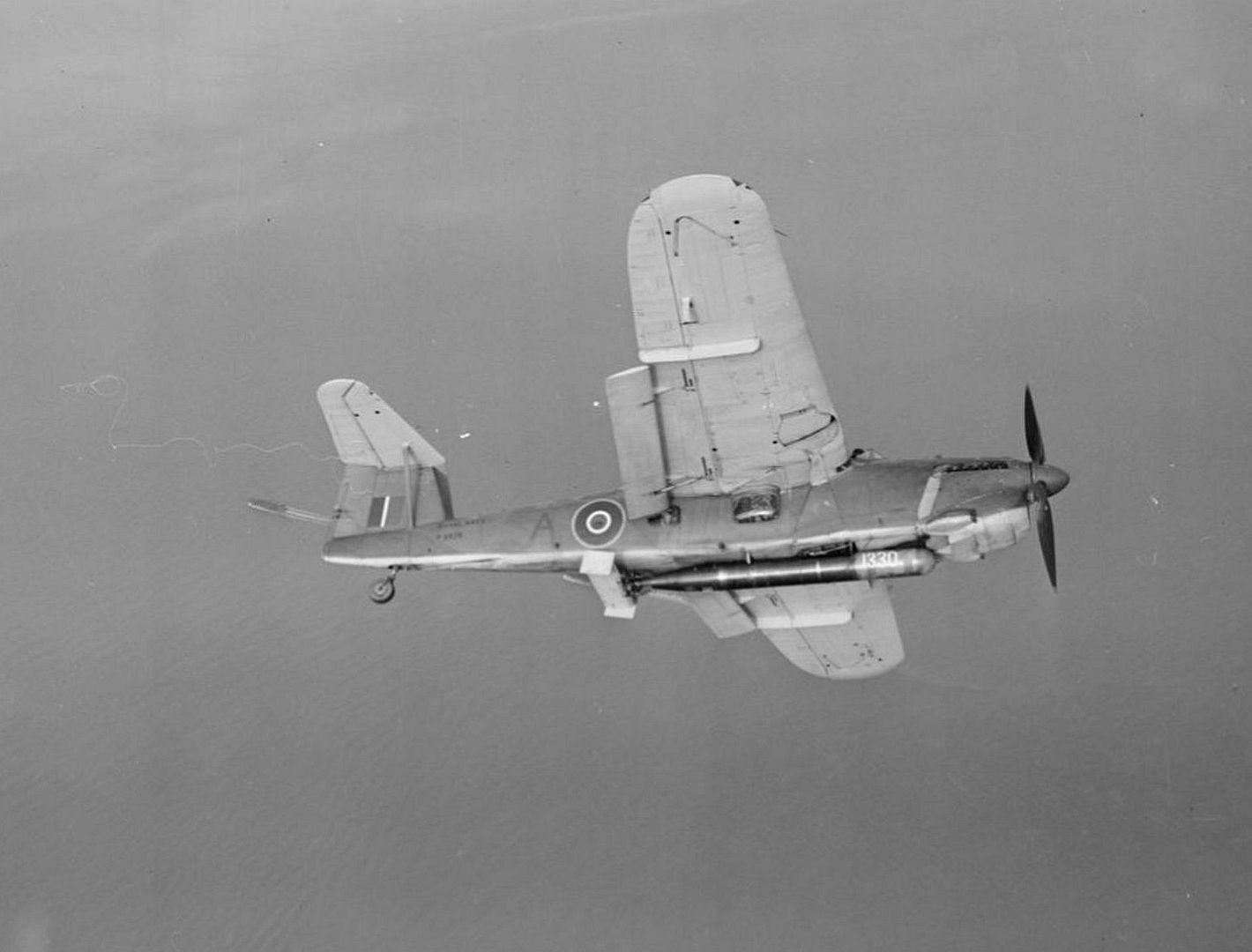
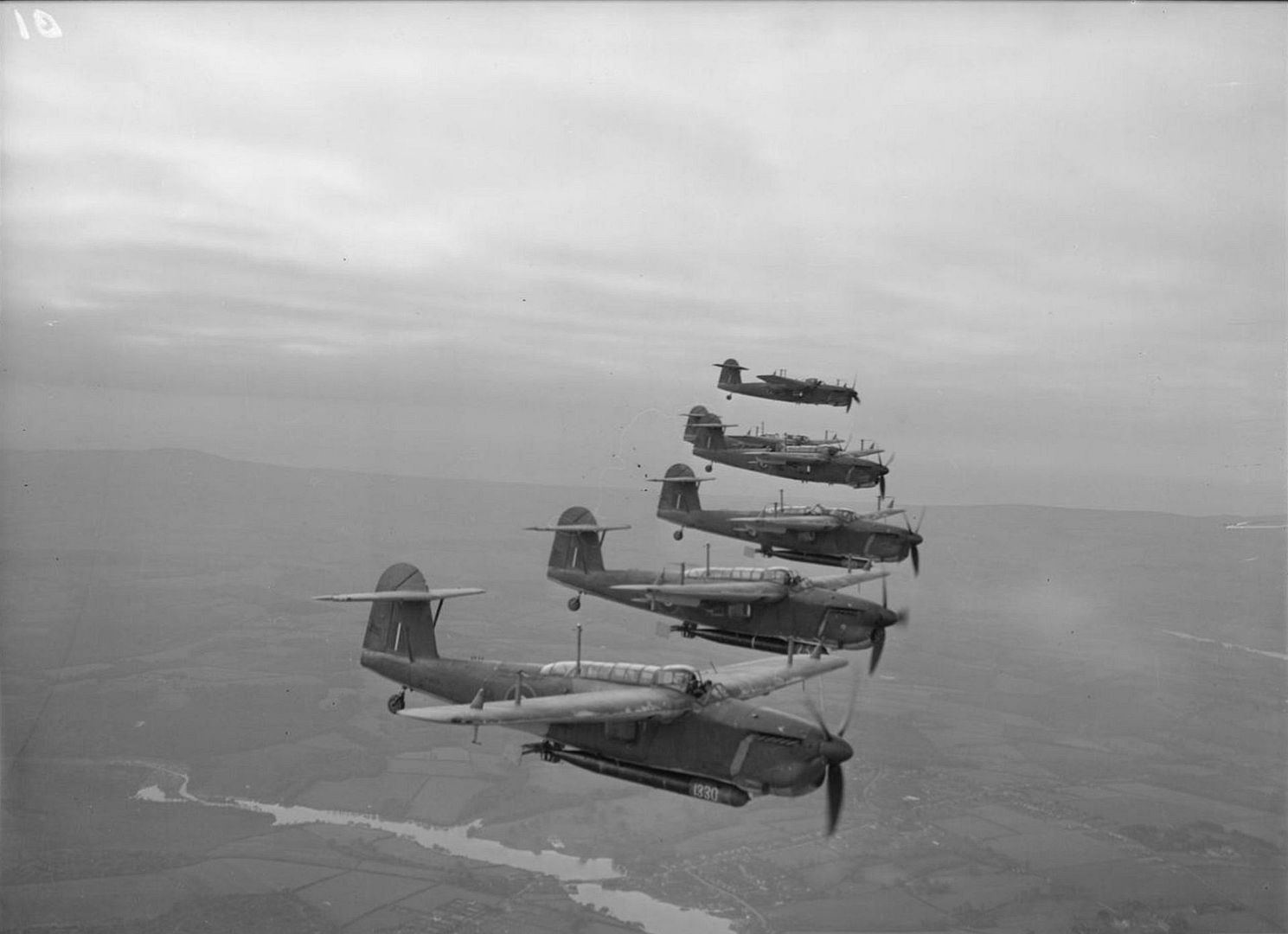
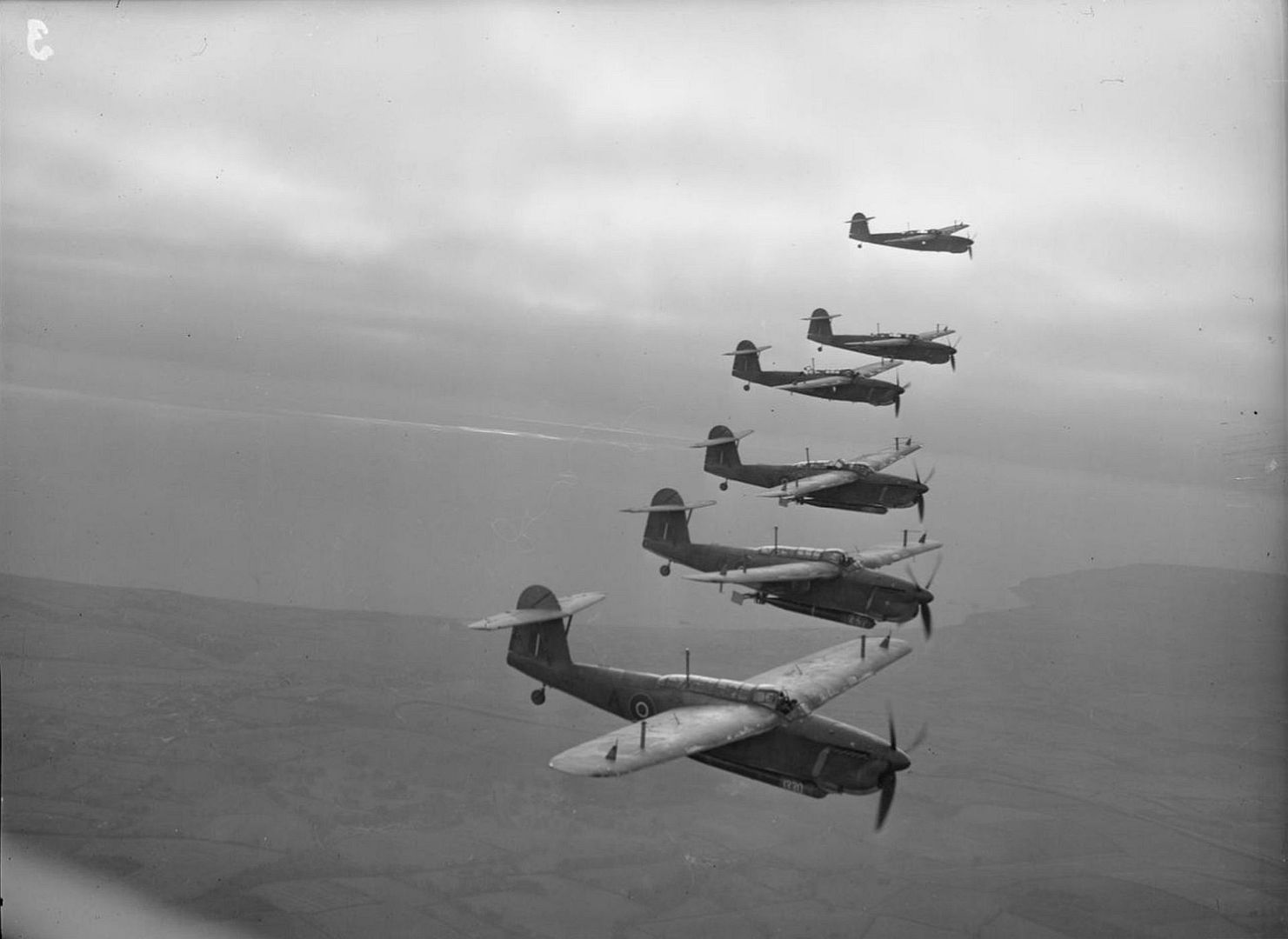
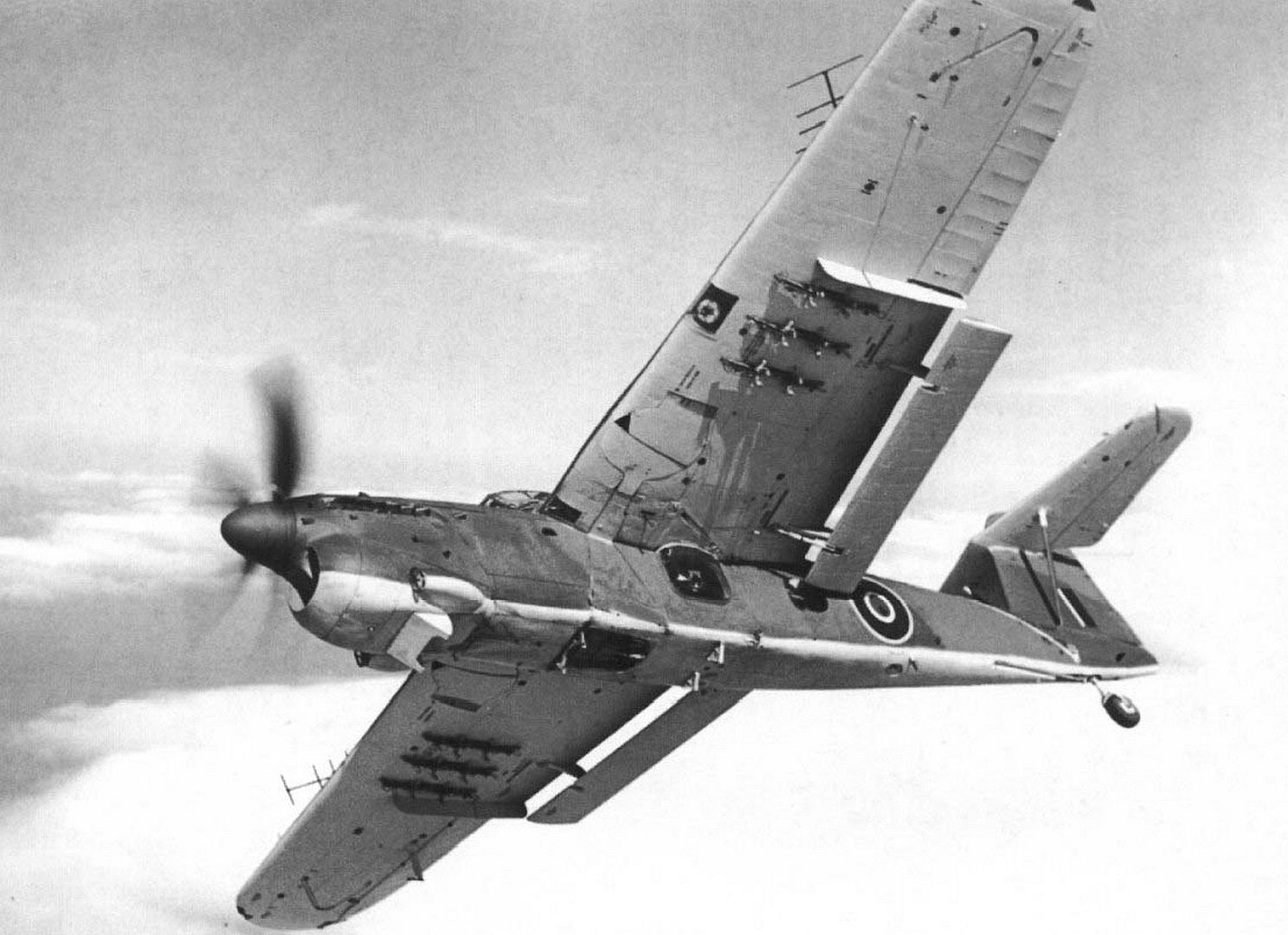

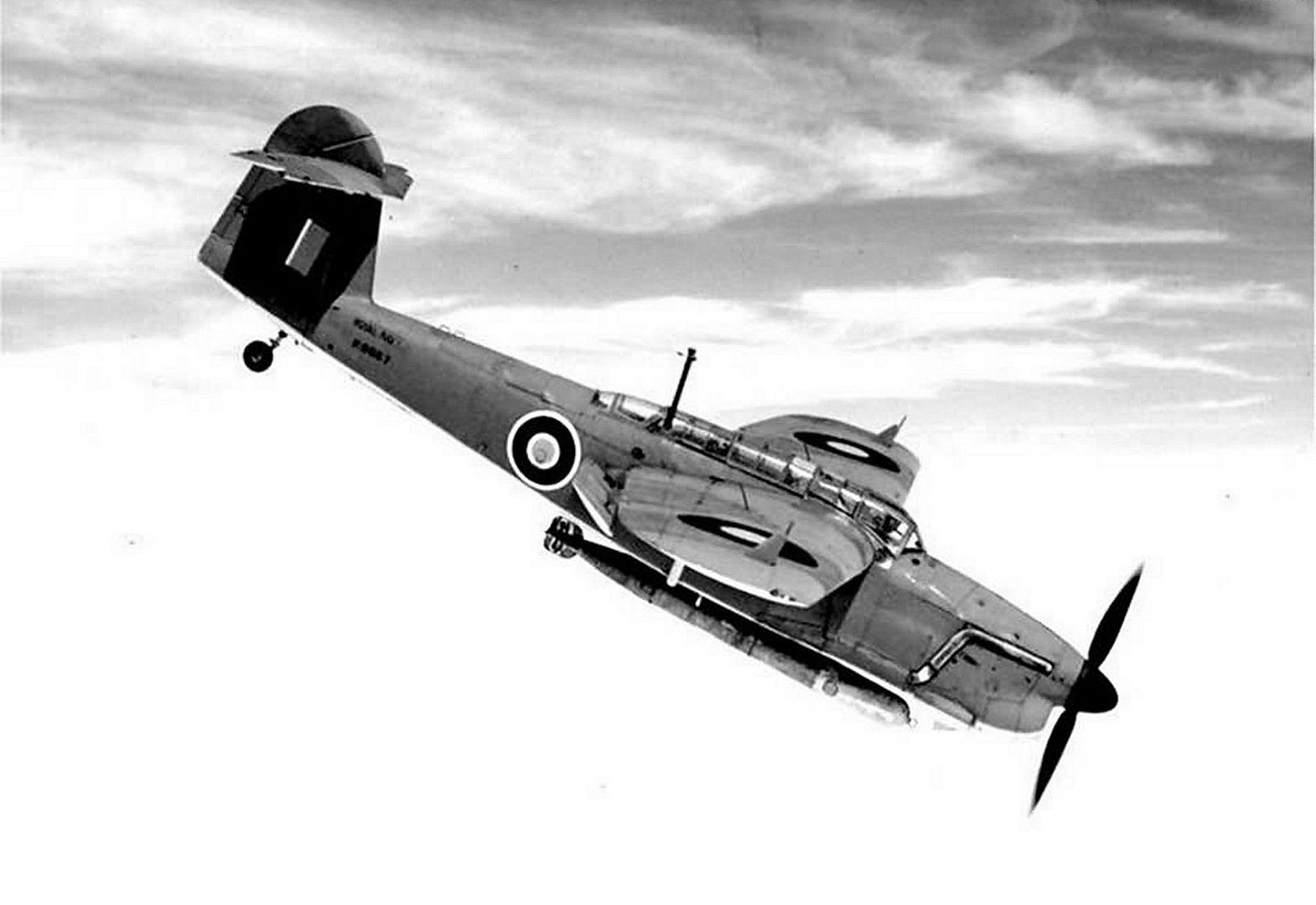
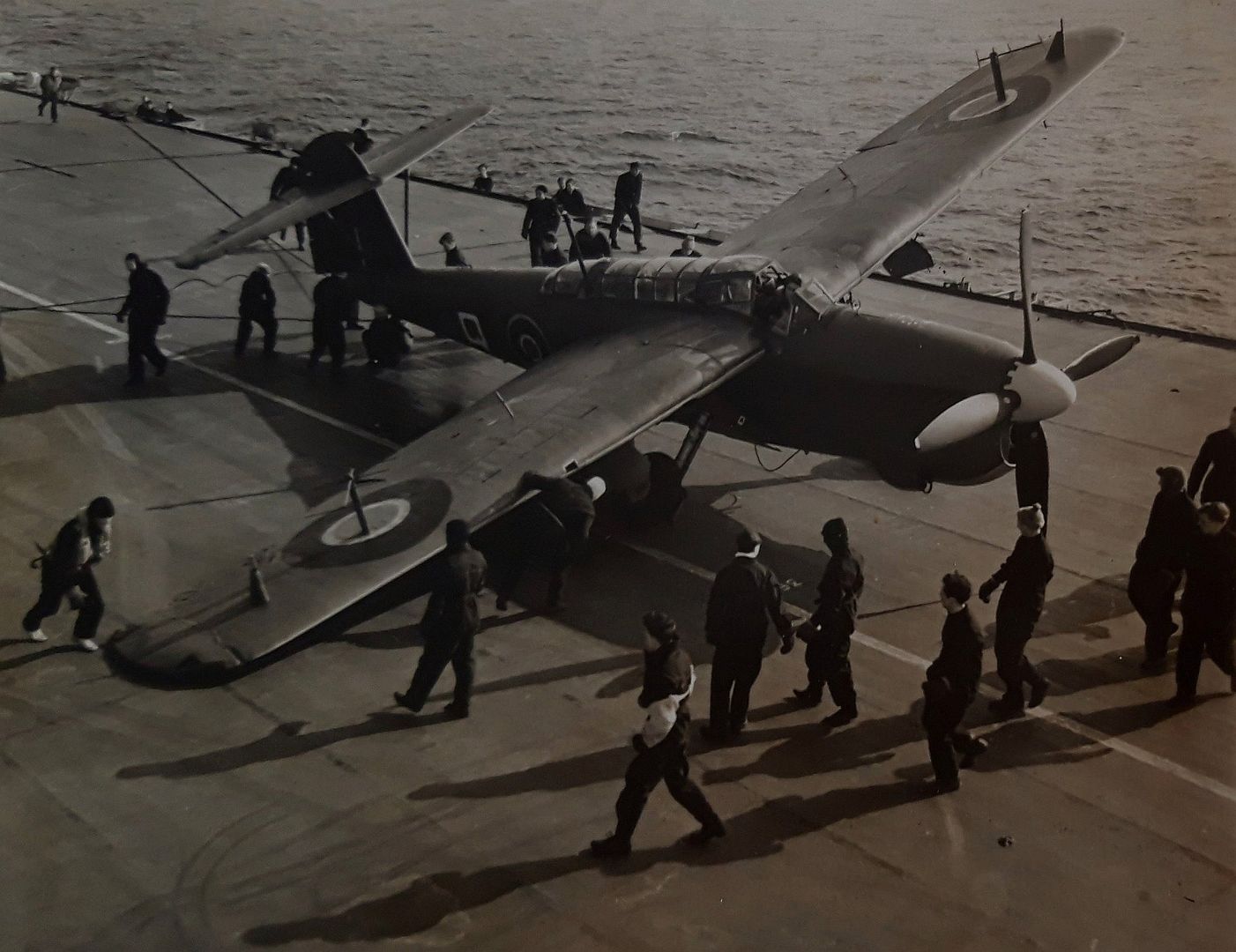

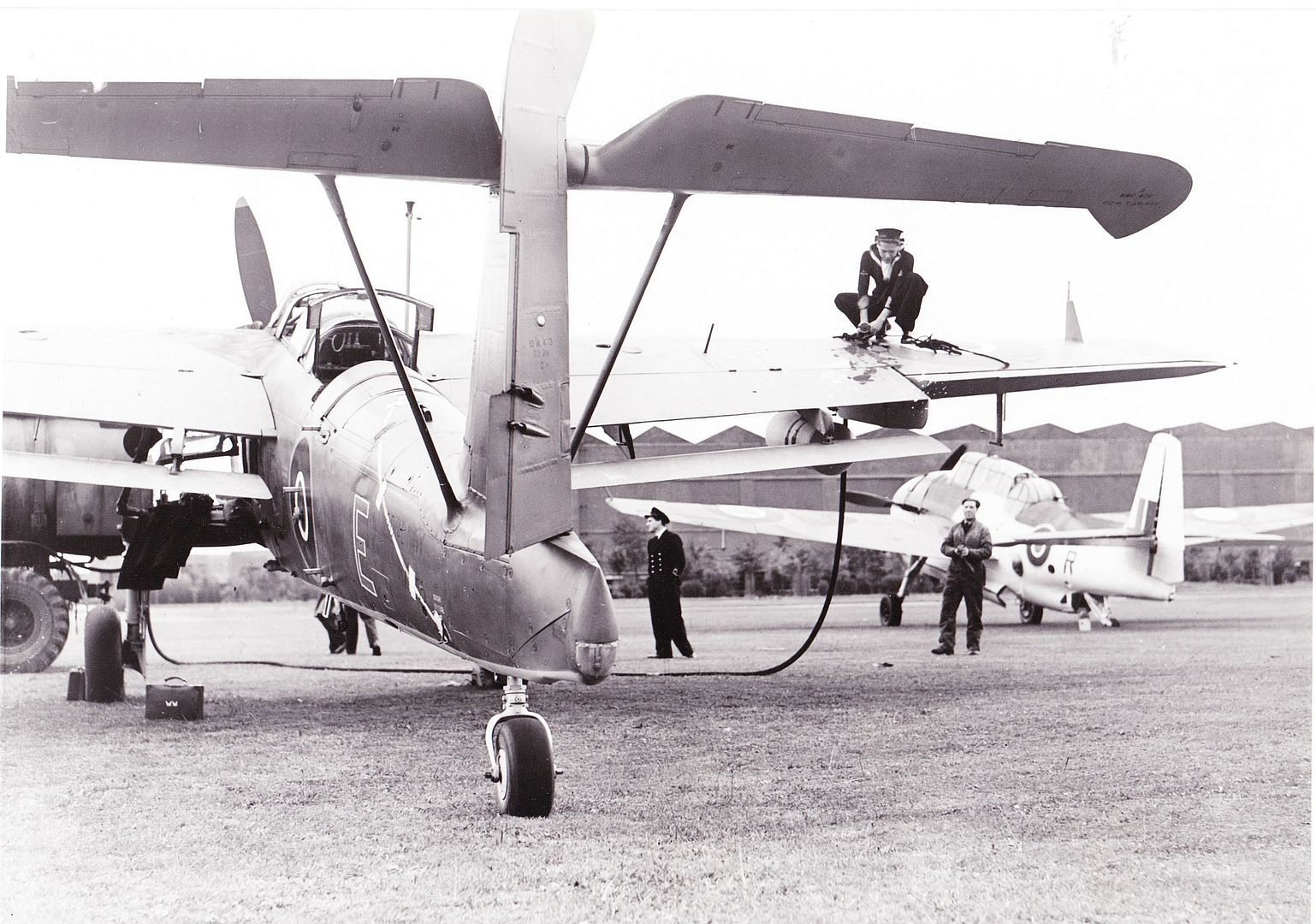
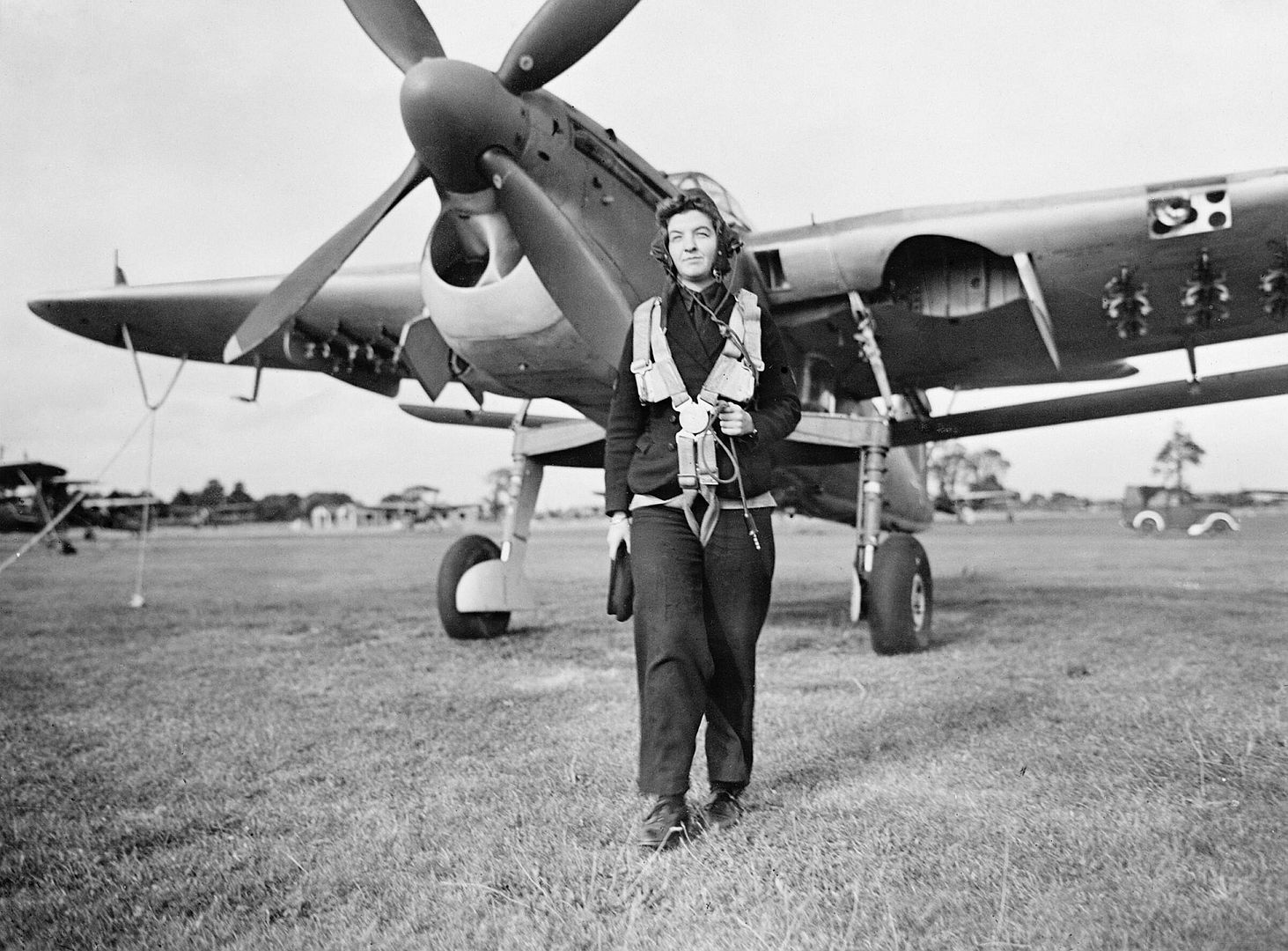
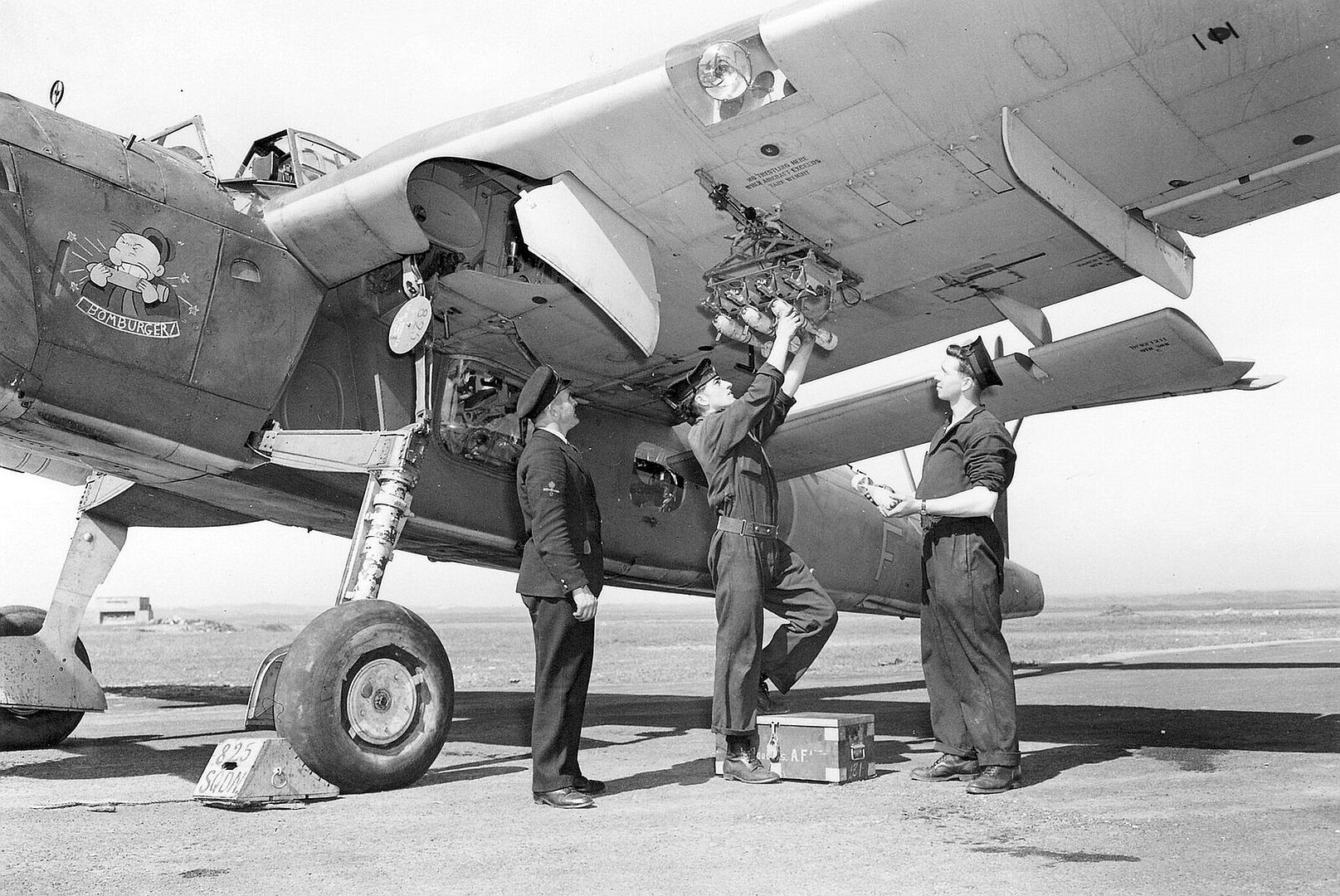
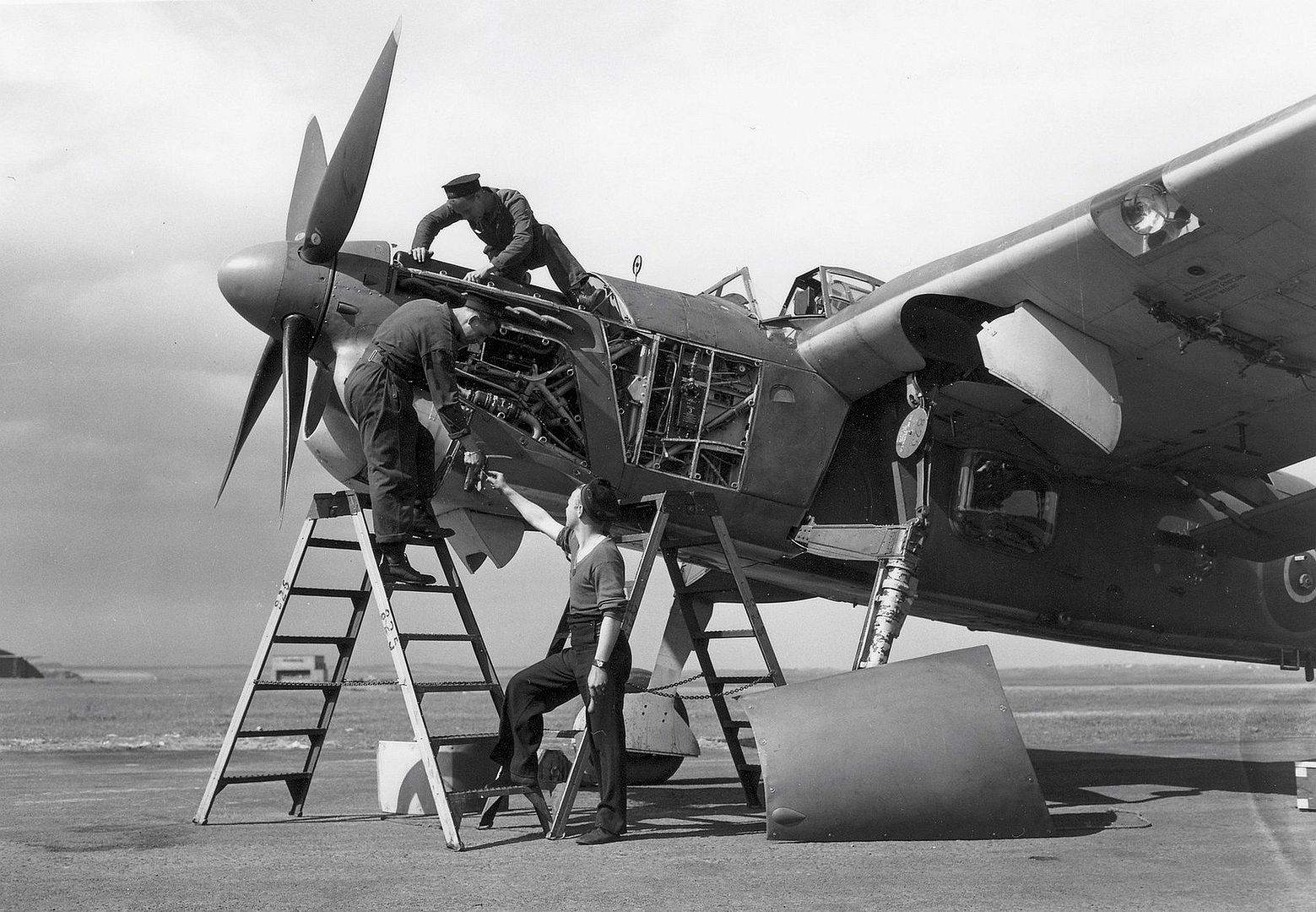
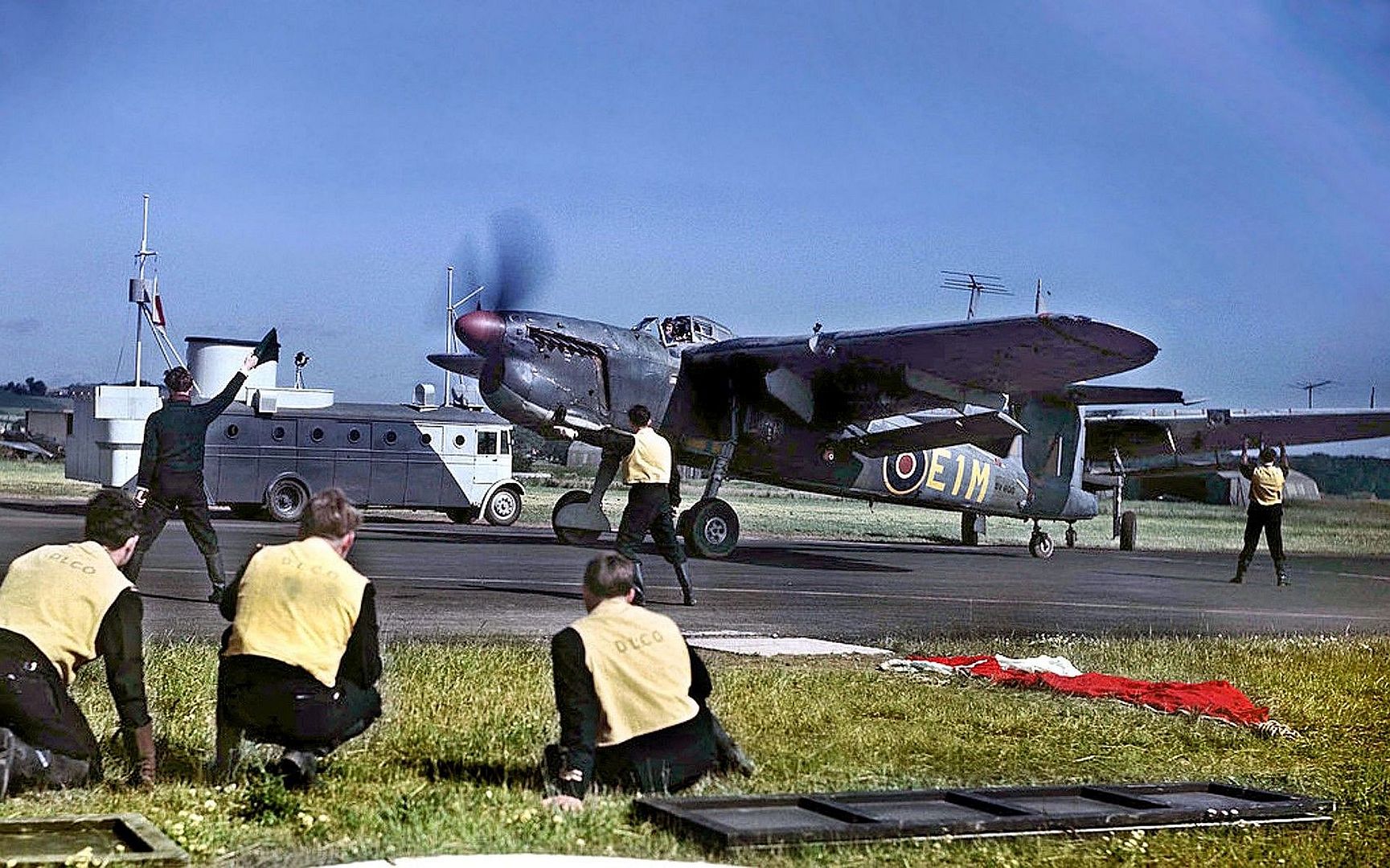

Mk III
Anti-submarine warfare version of Mk II with ASV III radar in a blister under rear fuselage, 852 built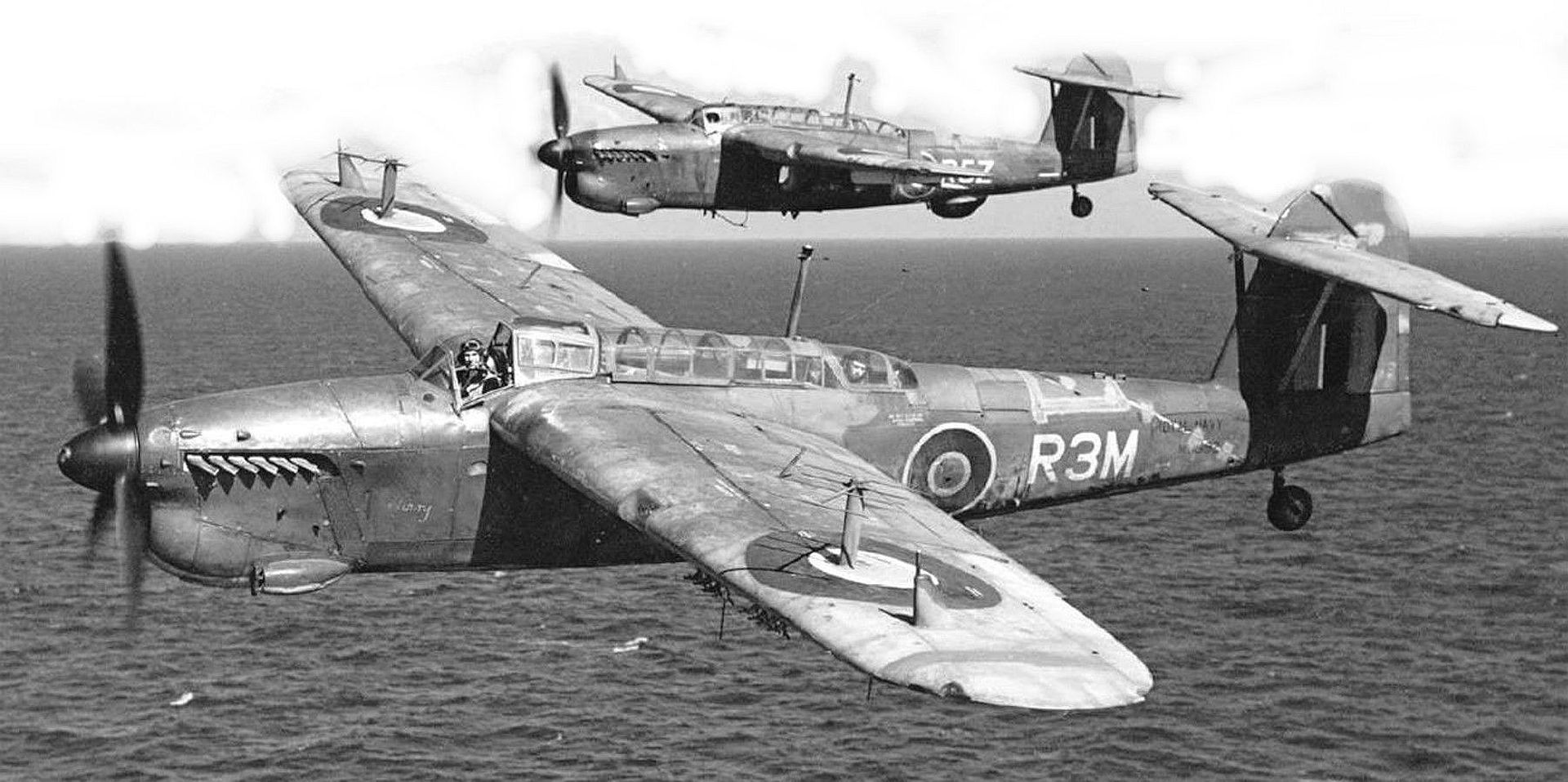
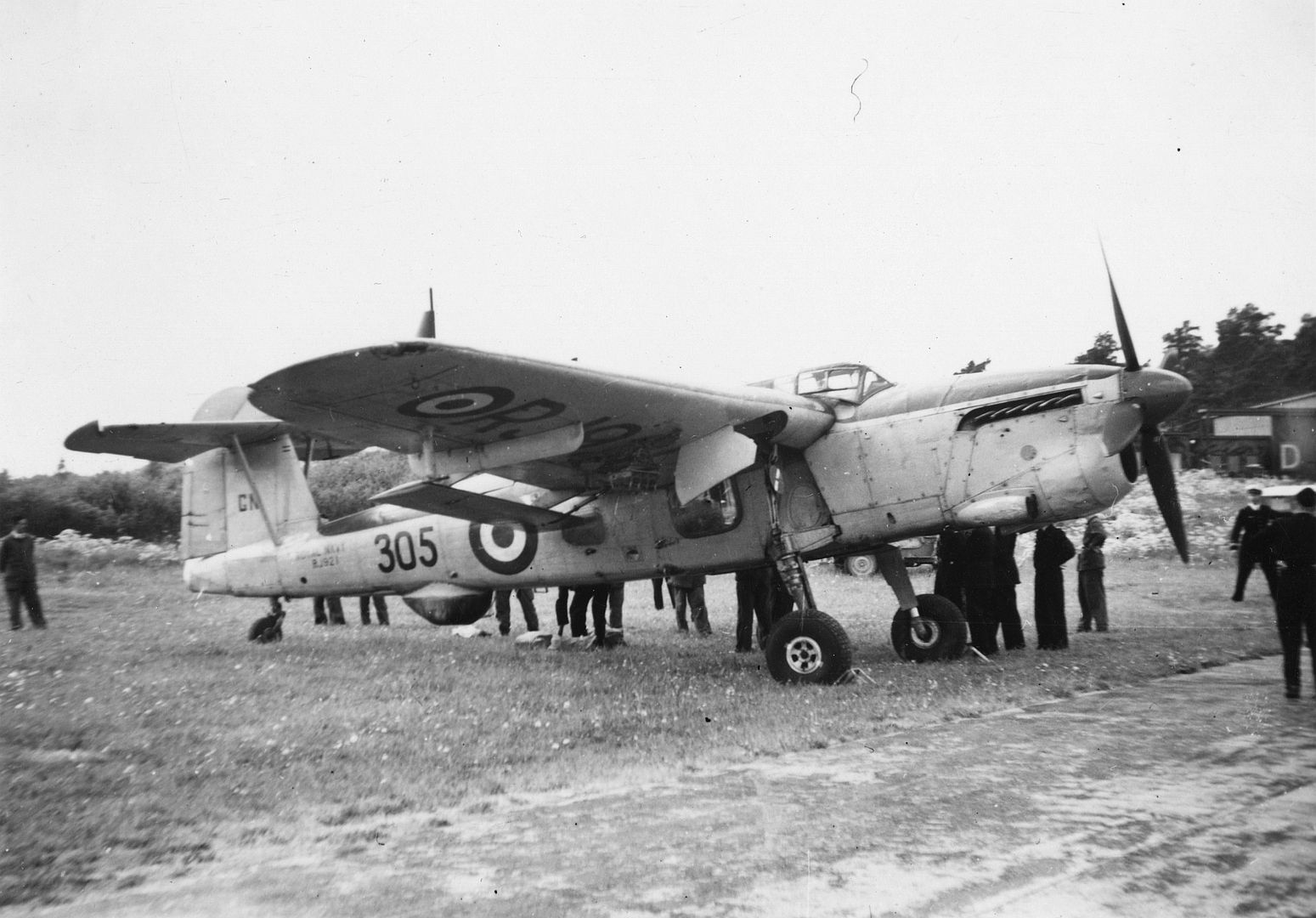

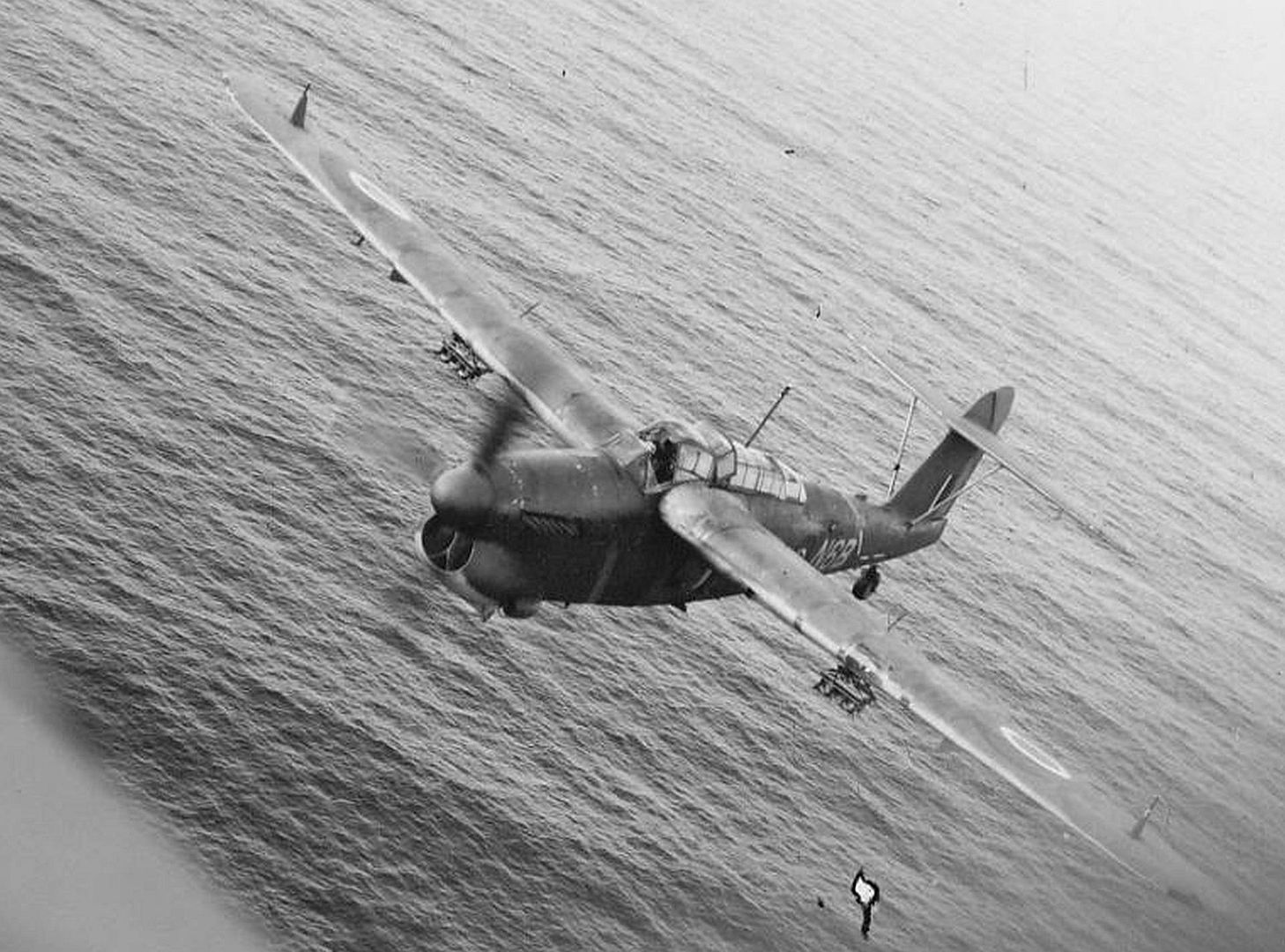
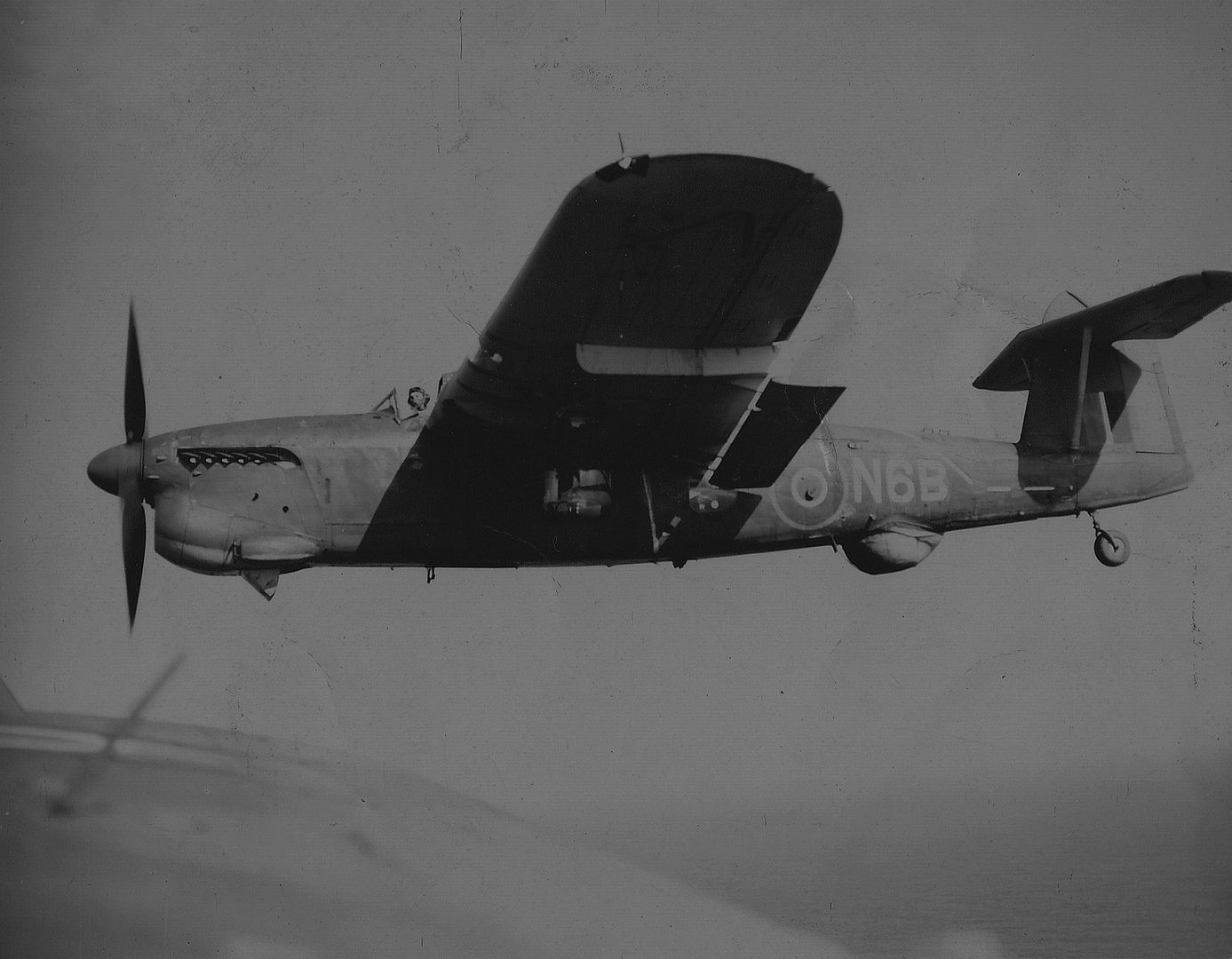

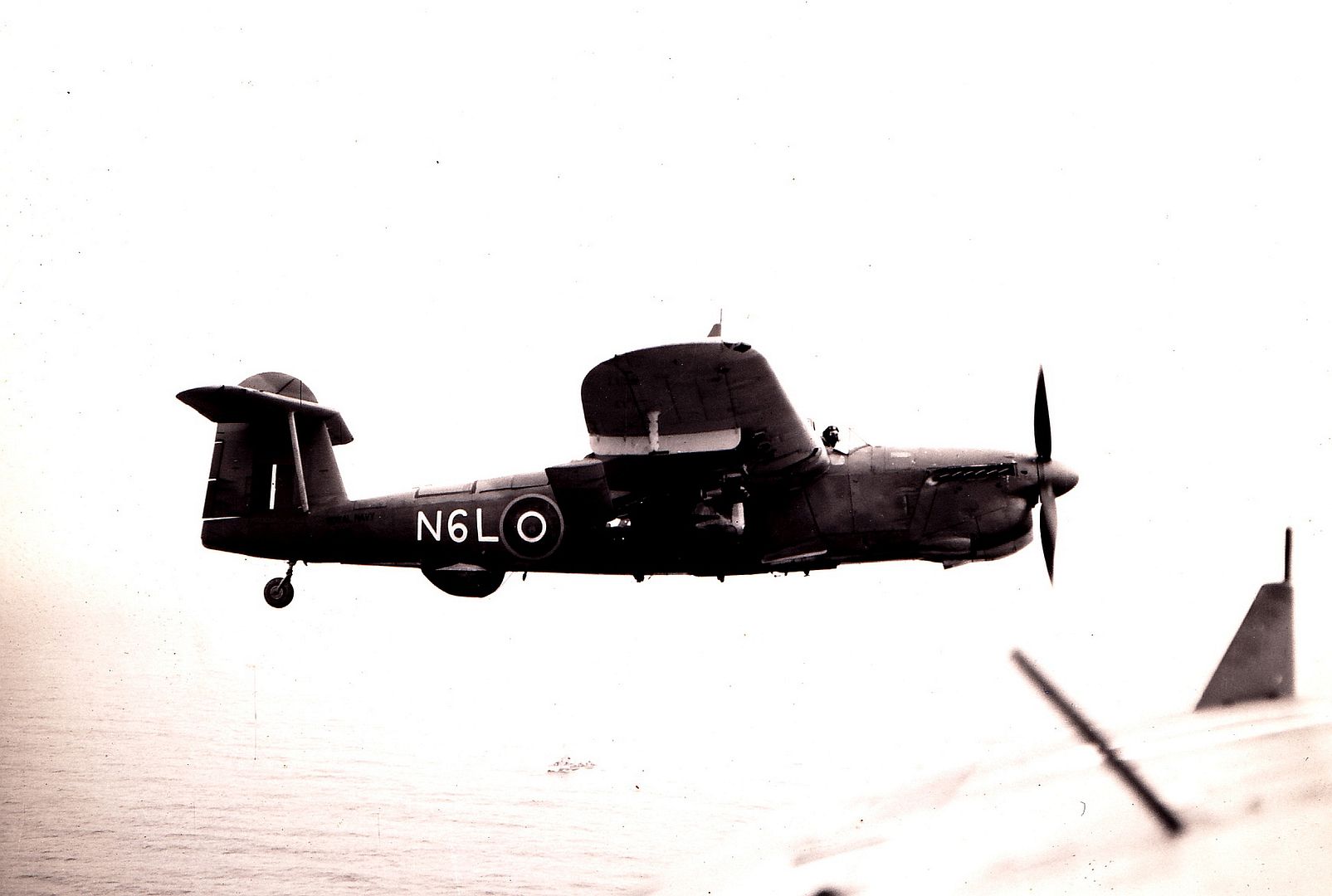
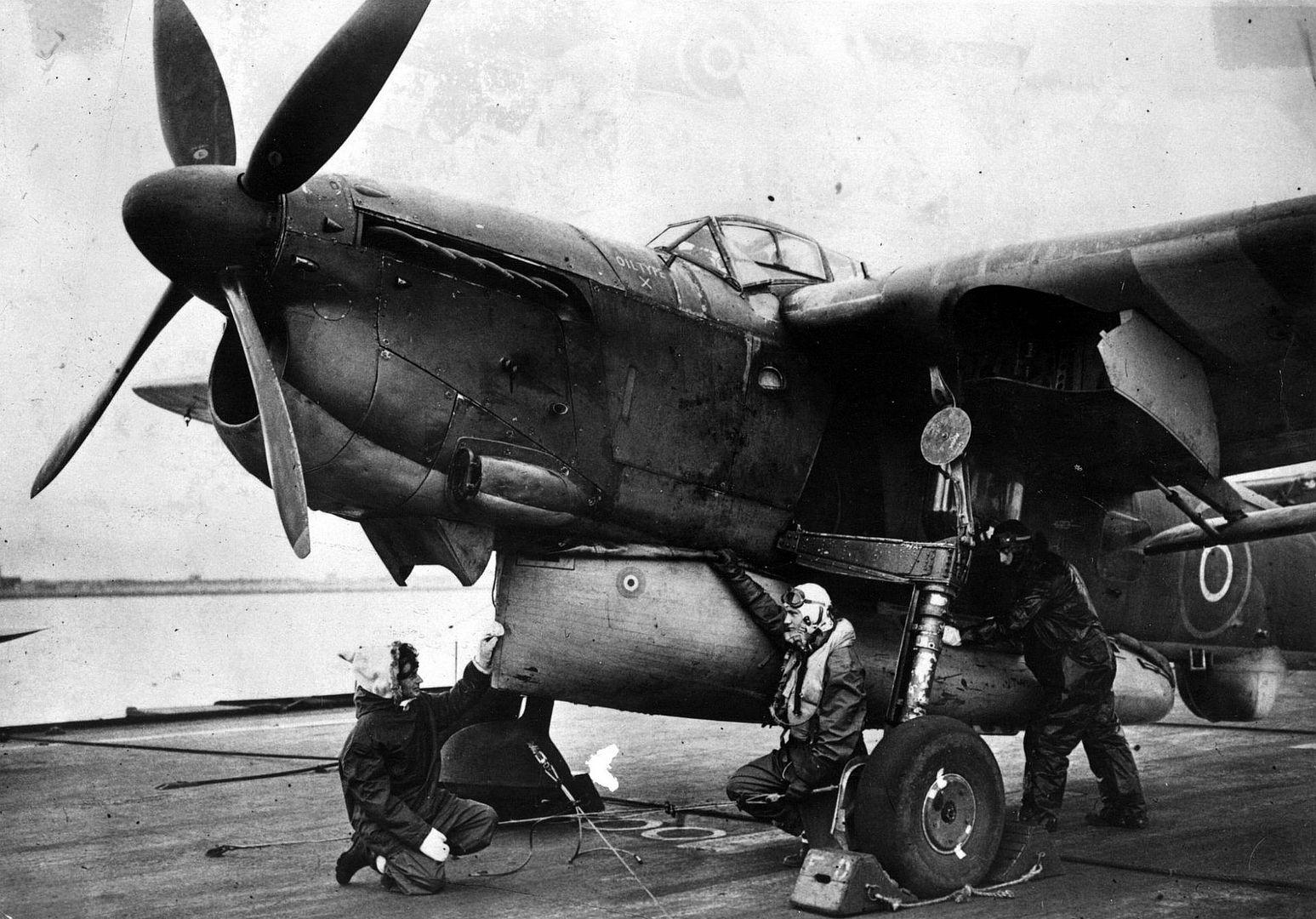

Mk IV
Mk II (number P9976) fitted with a Rolls-Royce Griffon engine with 1,850 hp (1,380 kW), first flight 11 November 1944, abandoned in favour of Fairey Spearfish.
Mk V
Griffon 37 engine with 2,020 hp (1,510 kW), payload increased to 2,000 lb (910 kg), ASH radar under the left wing, revised tailfin, 37 built.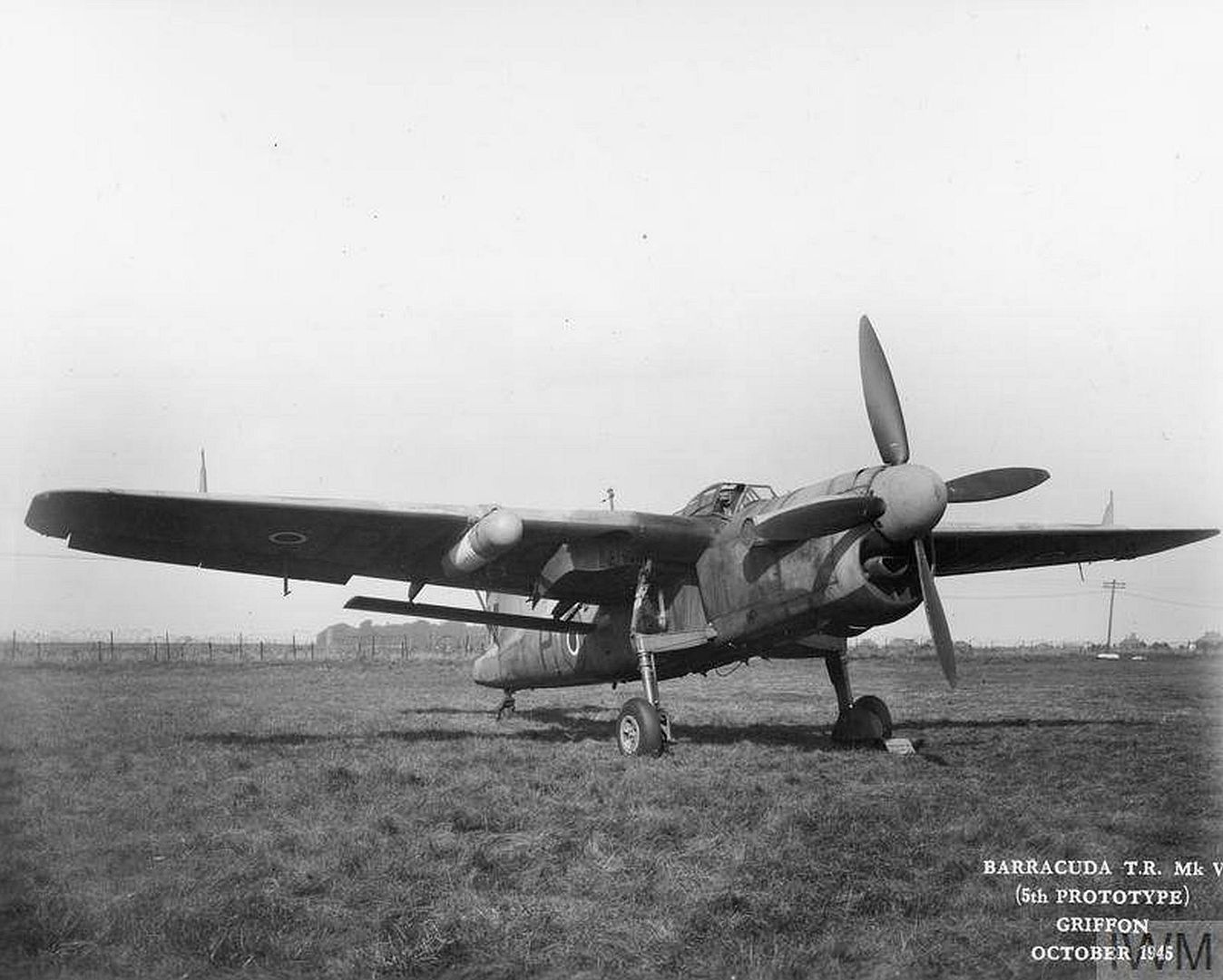
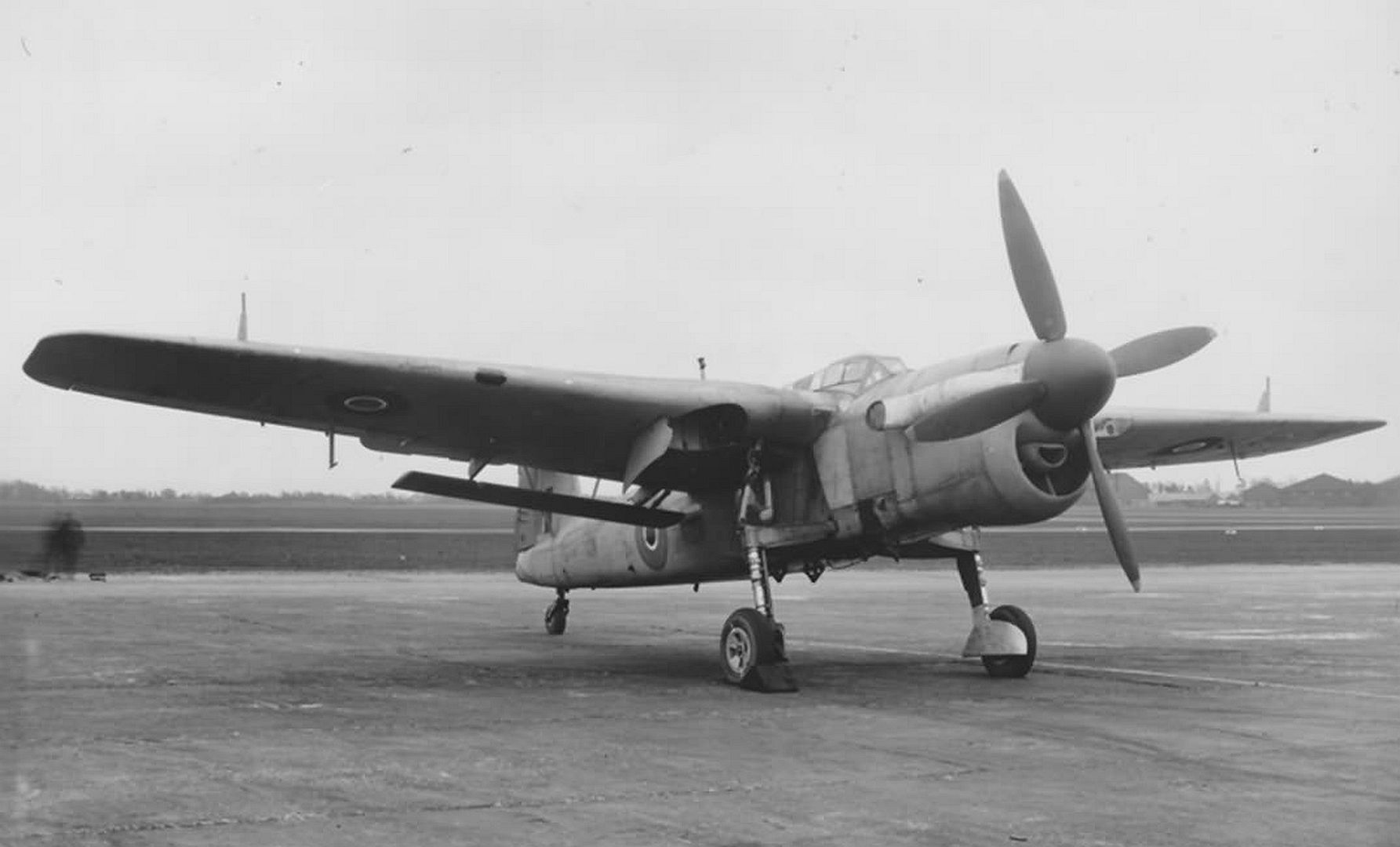
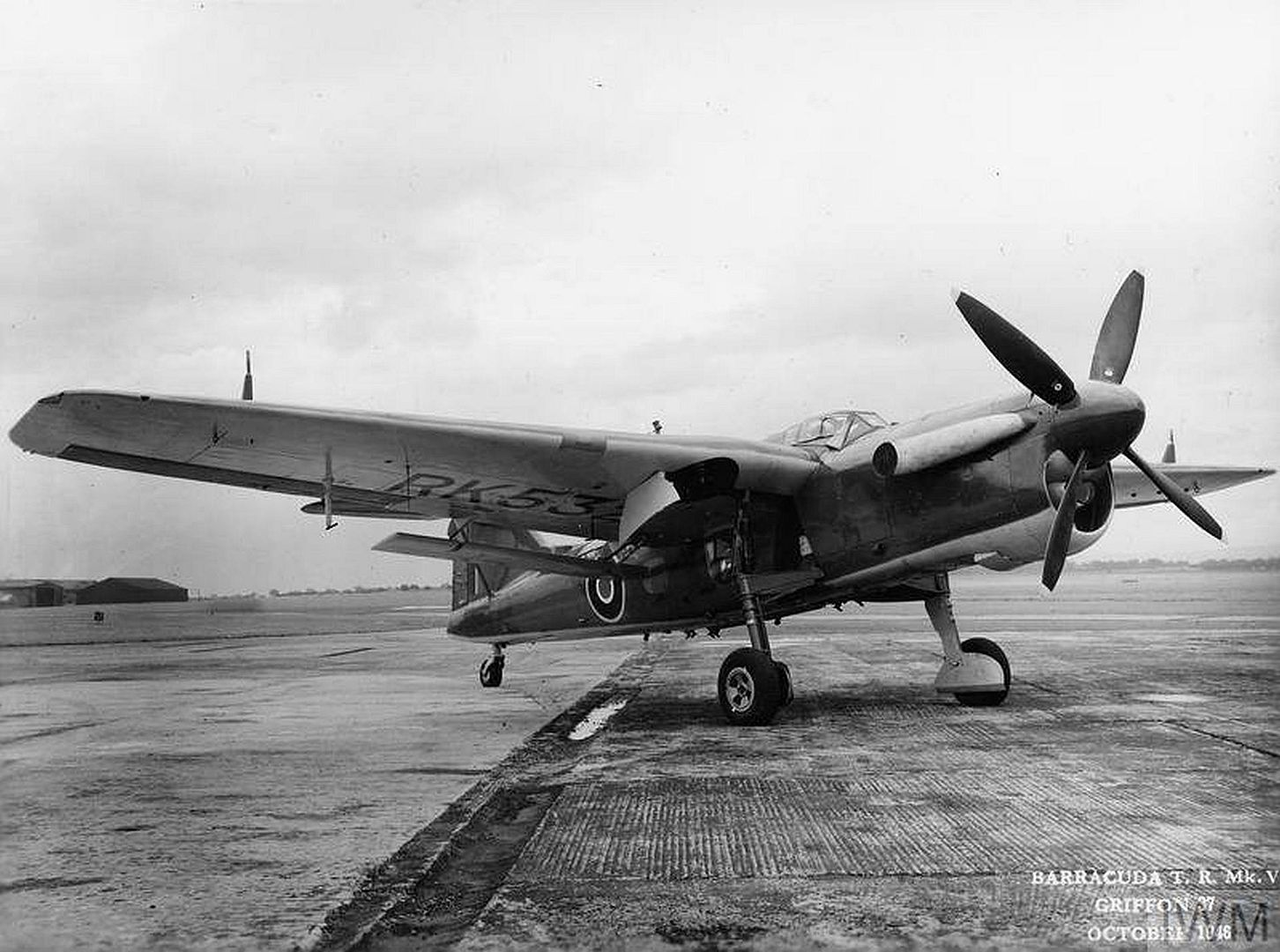

Specifications (Barracuda Mk II)
General characteristics
Crew: 3
Length: 39 ft 9 in (12.12 m)
Wingspan: 49 ft 2 in (14.99 m)
Height: 15 ft 2 in (4.62 m)
Wing area: 405 sq ft (37.6 m2)
Empty weight: 9,350 lb (4,241 kg)
Gross weight: 13,200 lb (5,987 kg)
Max takeoff weight: 14,100 lb (6,396 kg)
Powerplant: 1 × Rolls-Royce Merlin 32 V-12 liquid-cooled piston engine, 1,640 hp (1,220 kW)
Propellers: 4-bladed constant-speed propeller
Performance
Maximum speed: 240 mph (390 km/h, 210 kn)
Cruise speed: 195 mph (314 km/h, 169 kn)
Range: 1,150 mi (1,850 km, 1,000 nmi)
Combat range: 686 mi (1,104 km, 596 nmi) with 1,620 lb (735 kg) torpedo
Service ceiling: 16,000 ft (4,900 m)
Time to altitude: 5,000 ft (1,524 m) in 6 minutes
Wing loading: 32.6 lb/sq ft (159 kg/m2)
Power/mass: 0.12 hp/lb (0.20 kW/kg)
Armament
Guns: 2 × 0.303 in (7.7 mm) Vickers K machine guns in rear cockpit[43]
Bombs: 1× 1,620 lb (735 kg) aerial torpedo or 4× 450 lb (205 kg) depth charges or 6× 250 lb (110 kg) bombs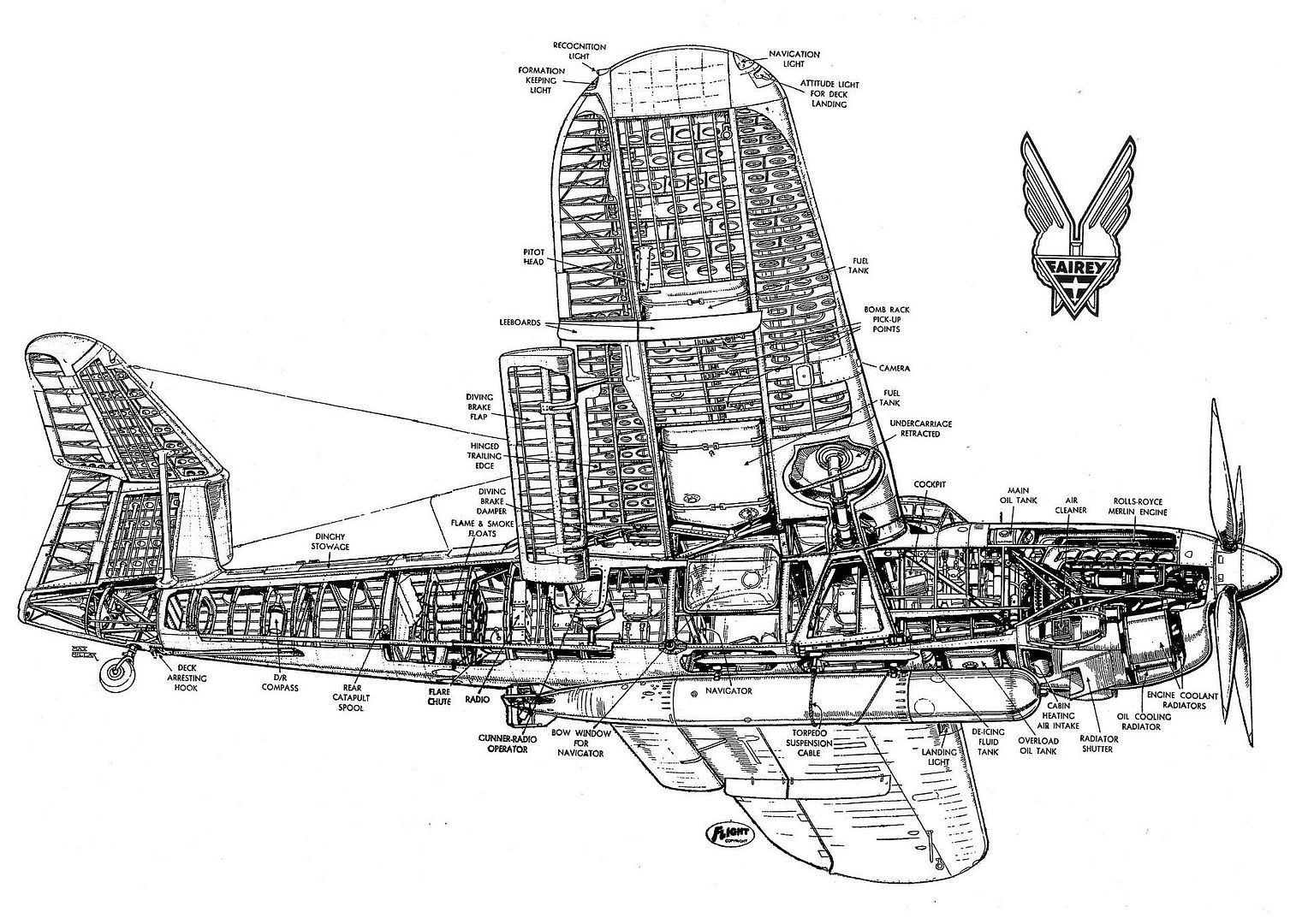
Post a reply
- Go to Previous topic
- Go to Next topic
- Go to Welcome
- Go to Introduce Yourself
- Go to General Discussion
- Go to Screenshots, Images and Videos
- Go to Off topic
- Go to Works in Progress
- Go to Skinning Tips / Tutorials
- Go to Skin Requests
- Go to IJAAF Library
- Go to Luftwaffe Library
- Go to RAF Library
- Go to USAAF / USN Library
- Go to Misc Library
- Go to The Ops Room
- Go to Made in Germany
- Go to Campaigns and Missions
- Go to Works in Progress
- Go to Juri's Air-Raid Shelter
- Go to Campaigns and Missions
- Go to Works in Progress
- Go to Skinpacks
- Go to External Projects Discussion
- Go to Books & Resources
